The 2021 Tech Innovator Awards
From among 373 applicants, CRN staff selected products spanning the IT industry—including in cloud, infrastructure, security, software and devices—that offer both strong differentiation and major partner opportunities.
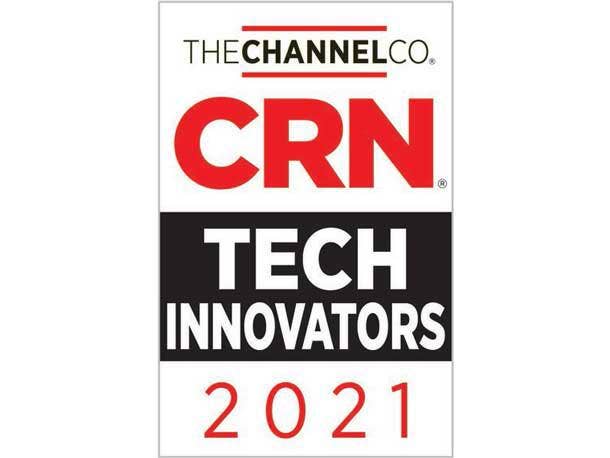
Channel-Friendly Innovation
As demand for digital transformation continues to surge across industries, the pace of technological innovation continues to accelerate as well. The pandemic has brought about massive changes in the business world, and the widely held expectation is that there is no going back. For instance, the hybrid, distributed workforce is here to stay; online meetings will continue to reduce the need for travel; and the shift to the cloud is showing no signs of slowing down any time soon. In this dynamic environment, innovative vendors across the tech industry have stepped up to the plate with differentiated products.
But what counts as true innovation in 2021? And what are the new products creating the biggest opportunities for the solution providers who are on the front lines with customers?
To help with uncovering products that are truly differentiated and channel-friendly, the 2021 CRN Tech Innovator Awards showcase offerings that bring significant advances in technology as well as partner growth opportunities—across segments including cloud, infrastructure, security, software and devices. The awards honor innovative vendors in 46 categories, along with two Editor’s Choice awards for deserving products that didn’t fit elsewhere. The winners and finalists were chosen by CRN staff from among 373 applicants.
CRN’s 2021 Tech Innovator winners and finalists appear on the following slides.
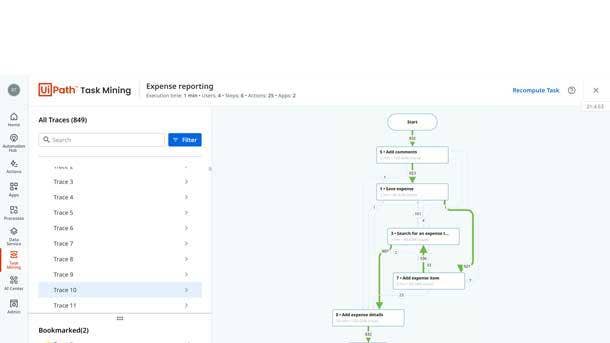
Automation
Winner:
UiPath Platform 21.4 Release
With the recent UiPath Platform 21.4 Release, enterprise automation specialist UiPath introduced an array of new capabilities including Automation Ops—which gives administrators an easier way to set up policies for automation users while providing centralized control of major deployments to IT. The 21.4 release also brings new solutions around AI-powered automation discovery such as task mining, which uses machine learning to identify repetitive tasks that could be automated without causing interruption to workers. Additionally, expanded capabilities in the UiPath Automation Cloud include the ability to run software robots in the cloud (in Microsoft Azure or AWS) and availability of UiPath Insights analytics in the Automation Cloud.
Finalists:
Aisera AI Service Desk
An automated service desk solution, Aisera’s AI Service Desk provides departments including IT, human resources and customer service with automation for as much as 80 percent of operations and support. The solution uses natural language processing and natural language understanding to enable self-service resolution for many user issues.
Alation Data Catalog
The Alation Data Catalog is a cloud-based data intelligence platform bringing together advanced artificial intelligence technology, machine learning and human insight. Key automation capabilities include conversion of technical terms into more-understandable business terms and automated identification of experts within an organization to uncover siloed information.
Automation Anywhere Robotic Interface
The Automation Anywhere Robotic Interface (AARI) is an intelligent digital assistant for aiding in robotic process automation work. With its simple-to-use interface, the AARI guides users through the steps involved in automating repetitive business tasks—making it possible for all types of employees to automate tasks using their browser or smartphone.
BitTitan Voleer Dashboards
BitTitan’s Voleer product, which offers automation for IT tasks, recently introduced a new dashboards feature that provides managed service providers and IT teams with clear data visualizations via a centralized hub. The feature enhances visibility by allowing real-time data to be measured against historical data.
CloudBolt Software: OneFuse
With its OneFuse middleware platform, CloudBolt Software enables rapid integration with infrastructure automation platforms, using a codeless, policy-driven approach. Recent updates for OneFuse have included new integrations for the platform with VMware vRealize Automation 8, ServiceNow CMDB and the SolarWinds IP Address Manager.
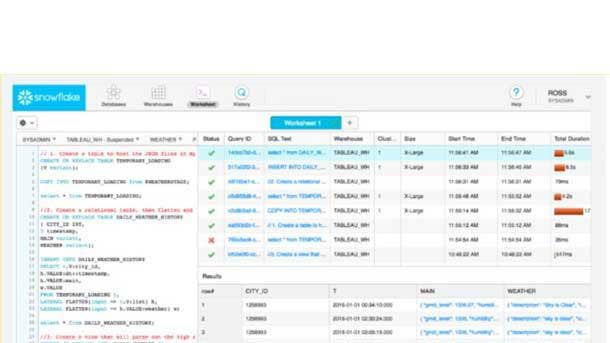
Big Data
Winner:
Snowflake Data Cloud
Recent enhancements to the Snowflake Data Cloud include new global governance features such as the ability for Snowflake’s classification capability to automatically detect personally identifiable information and then annotate the data, enabling control of access to the data. Other recent updates have included data programmability improvements (such as enabling users to bring custom code and business logic to Snowflake); improved storage economics (through better compression, reducing storage costs); better support for interactive experiences (offering a 6X improvement on query throughput for a compute cluster); and a new usage dashboard, which allows for better understanding of usage and costs on the Snowflake platform.
Finalists:
Ahana Cloud for Presto
With the cloud-native Ahana Cloud for Presto offering, startup Ahana is working to enable broader adoption of Presto—an open-source, high-performance SQL query engine. Ahana Cloud for Presto simplifies deployment and management of Presto, while also making it easier to integrate the SQL query engine with databases, data catalogs and data lake systems running on AWS.
Couchbase Server 7.0
Aimed at meeting database needs for highly interactive enterprises, Couchbase Server 7.0 brings together key elements of relational databases—such as ACID transactions—with NoSQL database flexibility. Key updates include the addition of SQL transactions to Couchbase’s N1QL query language and a new dynamic data containment model that enables both structure and flexibility.
Domino Enterprise MLOps Platform
New features in the Domino Enterprise MLOps Platform include Durable Workspaces, which allow users to keep multiple development environments open simultaneously instead of being restricted to one workspace at a time. Another new feature, CodeSync, provides automatic tracking for every aspect of data science work—enabling the work to be reproduced, discovered and reused as necessary.
Kyligence Cloud 4.5
Kyligence Cloud 4.5 is a cloud-native analytics platform capable of delivering sub-second response time against petabytes of data. Key functionality includes online analytical processing (OLAP) that pre-aggregates data in multi-dimensional indexes or “cubes,” speeding up queries and analysis of data. New additions in the 4.5 release include an extensible tiered storage architecture.
Monte Carlo Data Observability Platform
With support for both data warehouses and data lakes, the Monte Carlo Data Observability Platform offers automated data validation and monitoring—addressing the issue of data quality and reliability with an all-in-one solution. Using machine learning, the platform automatically learns about a data environment and triggers an alert when an anomaly appears or a pipeline falters.
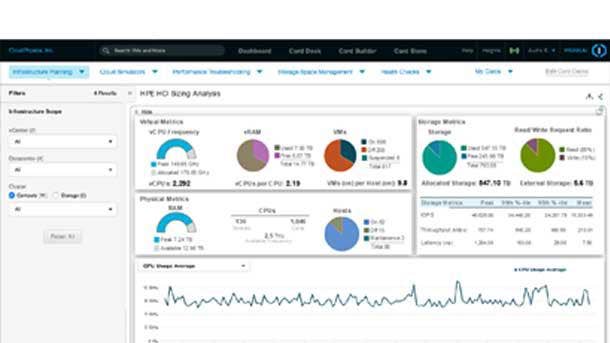
Business Intelligence and Analytics
Winner:
HPE CloudPhysics
Following Hewlett Packard Enterprise’s acquisition of CloudPhysics in February, the HPE CloudPhysics offering has been made available to partners as a tool to provide comprehensive analysis of on-premises IT environments—ultimately driving critical insights such as recommendations for infrastructure upgrades, application modernization and cloud migrations. The remote, agentless HPE CloudPhysics software provides continuous monitoring and analysis of IT environments, enabling partners to accurately forecast the impact of recommendations such as right-sizing a virtual environment, moving to the cloud or optimizing on-premise infrastructure. Key capabilities include extraction of configuration and resource utilization data at a granular interval—data that is then used to create a graph showing the current snapshot of a data center and identify optimization opportunities. HPE CloudPhysics also enables rapid time-to-insights for partners and customers, in as little as 15 minutes after set up begins.
Finalists:
DataRobot 7.1
For the DataRobot 7.1 enterprise AI platform, enhancements include the company’s new “No-Code AI” app builder, which enables users to rapidly turn deployed models into AI applications without the need for coding. Other new capabilities include MLOps Management Agents, which provide understanding on the state of remote models—regardless of where the models are running or how they were created.
NWN Carousel: Experience Management Platform
With its Experience Management Platform, NWN Carousel offers enhanced visibility, greater control and powerful analysis and reporting. The Experience Management Platform provides a unified view of a customer’s entire environment, ultimately offering business intelligence and analytics across contact center, unified communication, device management and security deployments.
Tableau Augmented Analytics
With the aim of making analytics accessible and useful for everyone, Tableau’s Augmented Analytics offers AI-driven analytics that enable a user to interact with data inside their usual work context. Key capabilities include automated modeling and natural language queries, allowing users—even if they’re new to analytics—to discover insights from data.
TIBCO Spotfire 11.4
For TIBCO Spotfire 11.4, there’s a major emphasis on making it easier for users to visualize the discoveries found in their data. The product features more than a dozen new customer visualizations that aim to make it simple for users to build, use and share their data visualizations.
Virtusa: vLife 6.0
With vLife 6.0, Virtusa provides healthcare and life sciences users with access to data science solutions featuring pre-trained machine learning models and snippets of code to jumpstart their work–as well as other tools and accelerators focused on their industries.
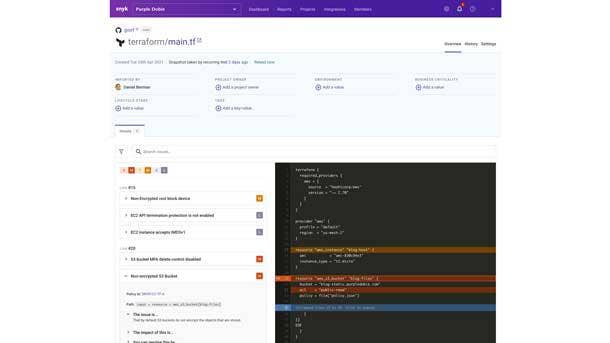
Cloud Security
Winner:
Snyk Infrastructure as Code
Snyk Infrastructure as Code helps ensure security for cloud-native applications by enabling secure configuration for Kubernetes and Terraform, eliminating the need for manual reviews that frequently lead to errors. The platform allows best practices around infrastructure-as-code to be turned into code fixes within a developer’s workflow—serving as a single platform for secure, streamlined building throughout a cloud-native application’s code. Key capabilities include testing and monitoring for Terraform and Kubernetes, providing detection of configuration problems that could create a security vulnerability. Snyk Infrastructure as Code ultimately embeds security expertise directly into the development process, enhancing security without requiring additional hires.
Finalists:
Aqua Security: Aqua Platform
With the Aqua Platform, Aqua Security offers a cloud-native security platform featuring a unified console to simplify the entire process of securing cloud-native environments—from scanning and visibility to workload protection. The platform reduces the burden on administrators while enabling security teams to start out with basic capabilities such as scanning and then introduce additional functionality as needed.
Cisco Umbrella
Cisco Umbrella enables securing of internet access and control of cloud app usage—across networks, remote workers and branch offices—by integrating multiple security functions into a unified cloud service. The platform brings together secure web gateway, cloud-delivered firewall, DNS-layer security, remote browser isolation and cloud access security broker capabilities to provide robust threat protection.
Guardicore Centra
By delivering an intuitive way of applying micro-segmentation controls, Guardicore Centra reduces the attack surface while detecting and controlling breaches. Using software-based segmentation, the platform empowers security teams to provide protection against lateral movement in ransomware attacks.
Illumio Core
Amid the widening attack surface, Illumio Core is a solution offering segmentation that can easily achieve massive scale—reaching more than 100,000 workloads. The platform enables customers to rapidly enforce segmentation policy across environments in order to protect high-value assets.
McAfee Enterprise MVision CNAPP
McAfee Enterprise’s MVision Cloud Native Application Protection Platform (CNAPP) delivers data protection, threat prevention, governance and compliance throughout the application lifecycle, including container and OS-based workloads. The platform stands out by converging cloud security posture management for public cloud infrastructure with cloud workload protection to protect hosts and workloads.
PerimeterX Platform
With the aim of protecting modern web applications at massive scale, the PerimeterX Platform recently added capabilities including Bot Defender and Code Defender. The capabilities offer protection against automated attacks, control of bot traffic and protection of payment pages against carding and digital skimming attacks.
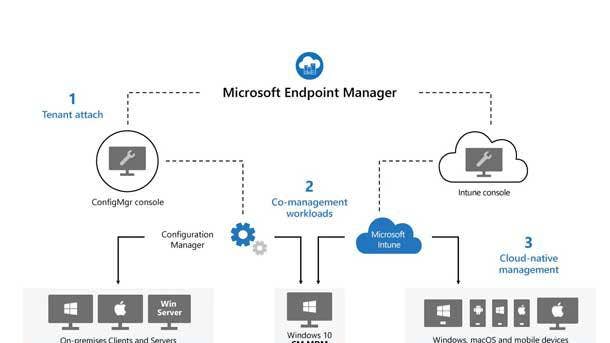
Cloud Tools and Management
Winner:
Microsoft Endpoint Manage r
A centralized cloud management platform for provisioning, deploying, managing and securing all of an organization‘s endpoints, Microsoft Endpoint Manager unifies the widely used Microsoft Intune and Configuration Manager tools. Recently added features include cloud config, which offers a simplified method for applying configurations that can turn devices into easily managed endpoints. Cloud config brings configurations that are recommended by Microsoft for typical users, enabling faster and easier deployment of cloud-managed endpoints. Other recent updates for Microsoft Endpoint Manager include support for Windows 365, Microsoft’s cloud-based, browser-accessible Windows desktop service. Using Microsoft Endpoint Manager, partners and IT teams can now deploy and manage Windows 365 desktops with the same tool they use for managing physical PCs.
Finalists:
Cisco Intersight
Recent updates to Cisco Intersight include the addition of the Intersight Kubernetes Service, which lets infrastructure teams automate the lifecycle management of Kubernetes and containerized applications across any environment. The recently added Intersight Workload Optimizer service, meanwhile, simplifies application resources management and telemetry data into a single tool that enables customers to balance application performance and cost.
Nerdio Manager for MSP
The Nerdio Manager for MSP solution is a multi-tenant management platform for deployment, management and optimization of Microsoft desktop virtualization environments—both Azure Virtual Desktop and Windows 365. The solution enables managed services providers to deploy virtual desktop environments in less than an hour, while existing deployments can be connected to within minutes.
NetApp: Spot Ocean for Microsoft Azure
A solution from NetApp-owned Spot, the Spot Ocean for Microsoft Azure solution leverages real-time analytics and machine-learning technologies to provide a hands-free experience for IT teams that are running cloud-native apps on the Azure platform. The solution continuously brings automation and optimization to Kubernetes clusters (along with the cloud compute resources that support them), eliminating the need for hands-on management.
Prosimo Application eXperience Infrastructure
Prosimo’s Application eXperience Infrastructure platform offers modernized, simplified application delivery across multi-cloud environments. The platform provides a novel architecture for bringing improved experiences for enterprise applications—across numerous environments—accelerating the adoption of multi-cloud.
SkyKick Cloud Manager
With the SkyKick Cloud Manager solution, managed services providers are empowered to maximize their profitability across software-as-a-service, infrastructure-as-a-service and platform-as-a-service. The solution includes automations that offer greater cost-efficiency for reactive operations, with capabilities such as Command Center, an app for enhancing help desk performance and cutting down on costly escalations.
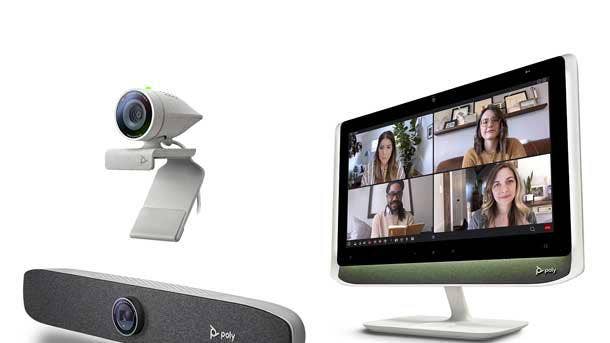
Collaboration - Devices
Winner:
The Poly Studio P-Series
With the Poly Studio P Series, which debuted in February, Poly is offering what it’s calling the “industry’s first” video conferencing equipment that is both professional-grade but intended for an individual’s use—such as while working from home. The series consists of the Poly Studio P5 Webcam, which offers 1080p resolution, 4X digital zoom, a directional microphone and built-in privacy shutter; the Poly Studio P15 Personal Video Bar, offering 4K, automatic camera framing and an integrated speaker and mic array featuring enhanced noise-blocking; and the Poly Studio P21 Personal Meeting Display, a 21-inch display primed for video conferencing with a camera and audio built-in.
Finalists:
DTEN ME Pro
An “all-in-one” collaboration device, the DTEN ME Pro is a 27-inch monitor that features a built-in three-camera array with 160-degree view, an eight-microphone array and integrated stereo speakers. The display also offers 1080p resolution and touch screen functionality.
Jabra PanaCast 50
The Jabra PanaCast 50 is an intelligent video bar offering a 180-degree field-of-view and AI-driven automatic adjustments, such as zooming in to focus on one individual or zooming out to include all participants. With its Virtual Director feature, the PanaCast 50 can switch video frames from speaker to speaker depending on what is happening at the moment.
Owl Labs: Meeting Owl Pro
Meeting Owl Pro is Owl Labs’ all-in-one communications device featuring a 360-degree camera, mic and speaker. The smart device leverages vision and voice recognition technologies to automatically move the camera to focus on whoever is speaking, and is compatible with video conferencing platforms including Zoom, Microsoft Teams and Google Meet.
Sharp 4T-B70CT1U Aquos Board
Aimed at serving both meeting rooms and classrooms, the Sharp 4T-B70CT1U Aquos Board is a 69.5-inch interactive display with 20-point multi-touch functionality, enabling simultaneous collaboration by multiple people. Key features include Public Mode, which prevents unwanted usage by people in a public location such as a classroom.
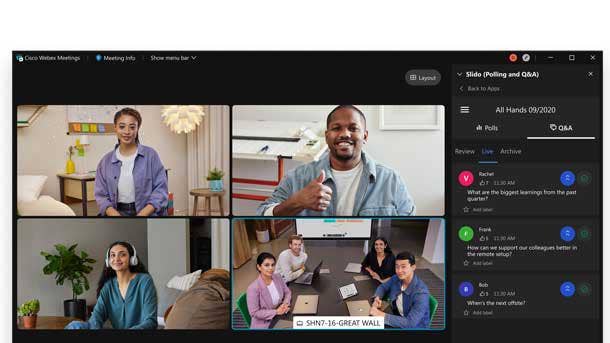
Collaboration - Enterprise
Winner:
Cisco Webex
As Cisco Systems’ flagship collaboration solution, Webex brings together meetings, calling, messaging and end-to-end event management. Over the past year, Cisco has rolled out more than 800 new features and capabilities to Webex for boosting meeting productivity, regardless of the user’s location. Key feature additions—all of them powered by artificial intelligence and machine-learning technologies—have included Webex Audio Intelligence and new noise-cancellation technology for improved audio clarity; Real-Time Translations, which offer live translations from English to more than 100 languages; and Gestures, which enable users to communicate non-verbally during meetings without the need for tapping an icon.
Finalists:
Avaya Spaces
With its Avaya Spaces collaboration platform—which brings together video meetings with chat, task management and a document repository—Avaya is seeking to stand out with capabilities around customization and artificial intelligence. In terms of customization, Avaya Spaces can be tailored to fit specific workflows or custom vertical use cases. And for artificial intelligence, the platform leverages AI-driven capabilities including noise cancellation and multiple speaker video overlay on presented content.
Citrix Wrike
Stemming from Citrix’s recent acquisition of Wrike, Citrix is now offering the Wrike collaborative work management platform, which includes capabilities such as Work Intelligence. The AI/ML-driven technology identifies signals and patterns—using factors such as work progress and work complexity, as well as an organization’s history—to help improve engagement while also offering timely predictions and recommendations.
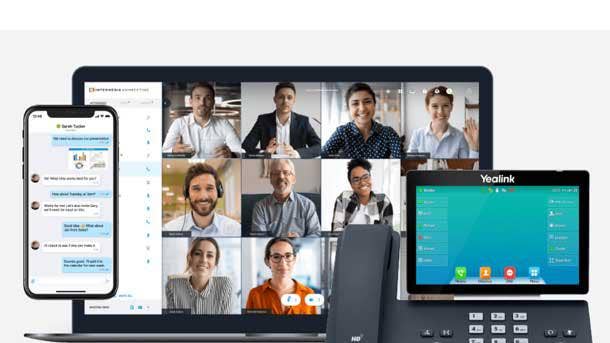
Collaboration - SMB
Winner:
Intermedia Unite
Focused squarely on meeting the unified communications and collaboration needs of small and medium-sized businesses, Intermedia Unite brings voice and video conferencing together with team chat, contact center and file backup. Mobile capabilities include the ability for users to place and receive calls from their work number on their mobile device. Recent key updates for the Intermedia Unite platform include the debut of new options for integrating Unite with the widely used Microsoft Teams collaboration app. With the Intermedia Unite for Microsoft Teams package, for instance, partners and customers can add Unite’s cloud-based phone system directly into Teams.
Finalists:
CoreDial: CoreNexa 7.0
For CoreDial’s CoreNexa 7.0 collaboration solution, key elements include a built-in softphone, HD video calls and meetings, and chat and SMS messaging. Additional collaboration features include virtual rooms, which are “always on” and available for team collaboration sessions.
Cytracom Shared Inboxes
With Cytracom’s Shared Inboxes solution, businesses are enabled to communicate with their customers using text messaging. The communications all come from a single business phone number in the Cytracom Desktop and Mobile apps, providing SMBs with a way to serve the growing customer preference for communicating via text message.
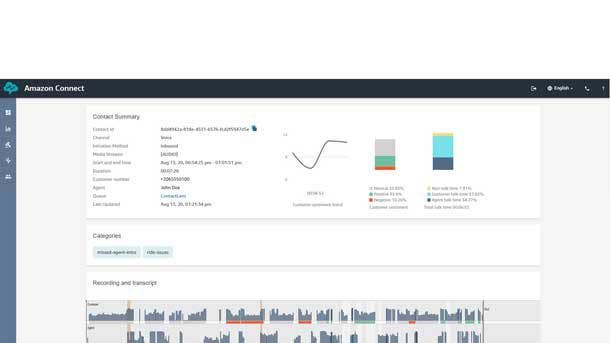
Contact Center Software
Winner:
Amazon Web Services: Amazon Connect
As Amazon Web Services’ cloud-based contact center offering, Amazon Connect is designed to help companies improve customer engagement at lower costs. Amazon Connect provides a unified contact center for voice, web and mobile chat capabilities, which is managed as a service with pay-by-the-minute usage fees. The offering leverages AWS artificial intelligence services to automate interactions, use text-to-speech to create personalized messages in real time, transcribe calls, show caller sentiment in real-time and analyze customer data. Recently added capabilities include Amazon Connect Customer Profiles, which provides agents with a fuller profile of each customer during a call—enabling a greater level of personalized service.
Finalists:
Cisco Contact Center
Cisco Contact Center, the company’s cloud contact center solution, offers businesses of all sizes a connected customer journey via a single unified platform. Key additions have included the integration of technology from the recent acquisition of IMImobile, which helps deliver improved customer interactions through scalable cloud communications software.
Genesys Multicloud CX
With its Multicloud CX contact center solution, Genesys is offering a Kubernetes-focused, multi-cloud architecture for enabling flexibility in choice of cloud providers—along with resiliency, security and compliance capabilities. The cloud-native solution offers a single code base that works across the two largest public cloud providers, Amazon Web Services and Microsoft Azure.
LogMeIn: GoToConnect Contact Center
With its GoToConnect Contact Center solution, LogMeIn offers capabilities for improving agent productivity such as analytics, inbound and outbound call monitoring, automatic call distribution and interactive voice response. GoToConnect Contact Center is also specifically designed to meet the needs of SMBs from a features and affordability standpoint.
TCN Operator
With an emphasis on automated agent tools and AI capabilities, TCN Operator is a call center platform focused on enhancing productivity, efficiency and customer experience. AI capabilities include providing agents with mid-call corrections when cues about a customer’s mood and attitude are picked up from tone of voice, long pauses and red flag keywords.
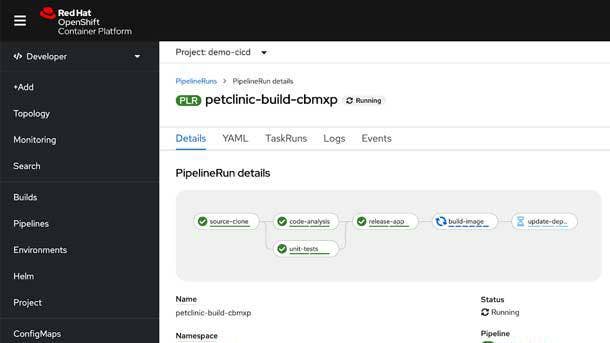
Container Technology
Winner:
Red Hat OpenShift
OpenShift, Red Hat’s widely used Kubernetes container platform, provides a hybrid cloud foundation for enterprise development of containerized applications—offering consistency across on-premises and public cloud workloads. Recent updates to Red Hat OpenShift have included new capabilities to enable faster development, such as through improved serverless functionality and allowing developers to use their Git workflow for automation of CI/CD pipelines. OpenShift also recently received security enhancements, such as providing applications with interoperability for IPv6 environments (used by federal agencies). And, in March, Red Hat debuted its OpenShift platform natively running on Amazon Web Services, with the OpenShift Service on AWS offering.
Finalists:
HYCU Protégé for Kubernetes
Offering protection for Kubernetes across multi-cloud environments, HYCU Protégé for Kubernetes includes capabilities such as dynamic detection of the creation of containerized applications; application of the correct backup policy to each app; identification of the dependencies between containerized apps; and the ability to scale up or down automatically.
Kasten by Veeam: Kasten K10 v4.0
Kasten K10, the flagship offering from Kasten by Veeam, is a data management solution that is purpose-built for Kubernetes—offering simplified backup and migration of cloud-native applications. Key capabilities include auto-application discovery, built-in compliance monitoring and policy-driven automation.
NetApp Astra Control
With its Astra Control application data management solution, NetApp simplifies the process of managing, protecting and moving Kubernetes workloads across environments—both public cloud and on-premises—as well as within those environments. Astra Control offers persistent container storage as well as application-aware data management capabilities, such as snapshot and backup/restore.
NeuVector 4.0
Recent updates in the NeuVector 4.0 container security solution include security automation via security-as-code functionality, enabling partners to embed security policies for continuous threat scanning; multi-cluster, multi-cloud management; and pre-configured security compliance templates for identifying possible compliance issues related to containerized environments.
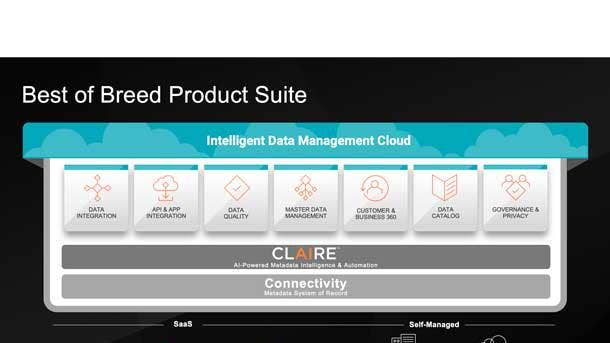
Data and Information Management
Winner:
Informatica Intelligent Data Management Cloud
With the aim of revolutionizing enterprise cloud data management, Informatica’s Intelligent Data Management Cloud is a cloud-native platform capable of elastic scaling. The platform provides data integration, app integration and data management from a single location, and offers more than 250 cloud services for cataloging, ingesting, integrating, cleansing and sharing data. The Intelligent Data Management Cloud also runs on any platform—across cloud and multi-cloud, on-premises and hybrid environments—and leverages an AI engine to rapidly derive insights from data. Additional capabilities include low-code and no-code cloud data management, making the platform applicable to users without coding skills.
Finalists:
Cockroach Labs: CockroachDB (20.2 and 21.1)
Recent updates to the CockroachDB cloud-native database in version 20.2 included the introduction of CockroachDB on Kubernetes—packaging the solution with a custom Kubernetes Operator. In version 21.1, meanwhile, Cockroach Labs simplified multi-region deployments to make the solution easier for developers to use regardless of their location.
Cohesity DataProtect delivered as a Service
DataProtect delivered as a Service is the first offering from Cohesity’s Data Management as a Service portfolio, aimed at offering simplified backup, security, governance and analytics for enterprise and mid-size customer data. DataProtect delivered as a Service offers backup for data in on-premises or cloud environments, allowing data to be viewed and managed on a single platform across all locations.
Cribl LogStream 3.0
Cribl’s LogStream observability data engineering software is used to build pipelines for moving high volumes of machine log, instrumentation, application and metric data between operational, storage, analytical and security systems. Recent updates include the introduction of a cloud-native version of LogStream.
M-Files New Web
With M-Files New Web, users get a simplified user interface allowing for a more-intuitive and faster use of the M-Files information management platform. Key capabilities include a contextual view of content (placed alongside content in other sites), an intelligent search interface and an integration into Microsoft 365 applications for creation of documents as well as editing and collaboration.
Talend Data Fabric
Using Talend’s Trust Score technology, the Talend Data Fabric provides rapid evaluation for data reliability within an organization. The solution provides diagnosis and resolution for data integrity issues, and works across multi-cloud, hybrid and on-premise environments. Features include automatic indexing of datasets, offering a full picture of data health.
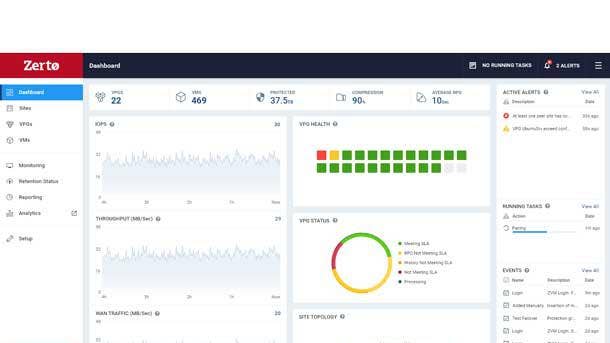
Data Protection Software
Winner:
The Zerto Platform
With the recent Zerto 9 release, the cloud data management and protection solution has introduced new capabilities aimed at defeating malicious modification or deletion of data, such as in a ransomware attack. The Zerto 9 user interface includes a new feature for managing immutability settings on long-term data retention—enabling users to determine how long a backup can stay unaltered and ensuring that backups are kept safe in the cloud. Other key capabilities include new automated protection for virtual machines; a new instant restore feature, for easily restoring virtual machines directly into production; and simplified management of backups for MSPs.
Finalists:
Arcserve Unified Data Protection 8
Arcserve Unified Data Protection 8 includes capabilities for stopping ransomware, restoring data and performing disaster recovery. The solution brings together server protection powered by deep learning with immutable storage and business continuity that is scalable and offered both onsite and off-site. Recently added features include Oracle backups and support for Microsoft Teams.
Axcient x360Recover Direct-to-Cloud
A business continuity and disaster recovery offering that doesn’t require hardware, Axcient x360Recover Direct-to-Cloud offers backup and cloud-based disaster recovery through a single solution with simplified management. Recently added features include faster pre-configured disaster recovery runbooks and enhanced security via single sign-on and multi-factor authentication.
Barracuda Cloud-to-Cloud Backup
Offering protection of data in Microsoft 365 apps, including Teams, Barracuda Cloud-to-Cloud Backup runs natively in the cloud and offers simplified management—enabling easier monitoring of backups and faster restoration of data. And as a cloud-native platform, the solution offers massive scale and resiliency.
Commvault: Metallic Backup and Recovery Solution
Key capabilities of Commvault’s Metallic backup and recovery solution include an architecture for enabling both storage infrastructure and the cloud to be utilized as part of adopting the data protection as a service offering. Recently added options include the Metallic Cloud Storage Service, which allows customers of Commvault on-premise software and HyperScale X appliances to back up data to the Metallic Cloud on Microsoft Azure.
Rubrik Cloud Data Management Platform
The Rubrik Cloud Data Management Platform offers a vendor-agnostic approach and a focus on immutability, preventing data from being modified by any external or internal force. Updated capabilities on the platform include streamlined disaster recovery and quicker recovery from attacks.
Veeam Backup and Replication V11
With Veeam Backup and Replication V11, more than 200 enhancements for data protection across environments include improved disaster recovery with built-in continuous data protection; enhanced ransomware protection via immutable Linux repositories; and native support for Amazon S3 Glacier and Microsoft Azure Archive Storage.
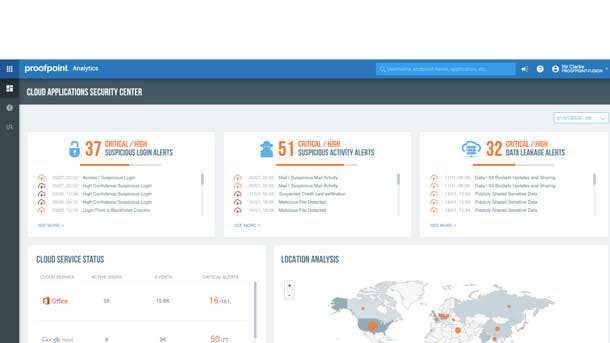
Data Security
Winner:
Proofpoint Information Protection and Cloud Security
With a focus on Data Loss Prevention (DLP), Proofpoint’s Information Protection and Cloud Security platform takes a people-centered approach to DLP by determining if a user who triggered a DLP alert is negligent, compromised or malicious—and then providing those insights to their organization in a timeline view. The cloud-native offering brings in telemetry from behavior, content and threat intelligence to generate an understanding of data loss scenarios for user profiles, assessing the risk of data loss from users. Other key capabilities include the ability to apply Proofpoint’s common DLP classification across channels, saving time and administrative effort, as well as awareness training modules on data loss for end users.
Finalists:
ALTR: Snowflake Cloud Integration
With ALTR’s Snowflake Cloud Integration, governance and securing of sensitive data is simplified and organizations are enabled to gain insights about consumption of sensitive data, set proactive governance policies and respond automatically to potential threats. The solution reviews all requests for access to data in Snowflake in real-time, and blocks any requests that show abnormal behavior or permissions.
Digital Guardian: Managed DLP Service for Midsize Companies
With its Managed DLP Service for Midsize Companies, Digital Guardian remediates attacks—both from external and internal sources—prior to sensitive data being put at risk. The solution leverages the Digital Guardian Data Protection Platform, which provides deep visibility, comprehensive classification and flexible controls.
The NetWitness Platform
The NetWitness Platform provides detection of compromises, understanding of the full scope of the issue and automatic response to threats. Key capabilities include improved visibility; integration of network data, logs, endpoints and IoT devices; and application of behavior analytics and threat intelligence to address threats.
Salt Security API Protection Platform
Using the company’s big data and AI engine to protect APIs against attacks across the entire lifecycle, Salt Security’s API Protection Platform offers capabilities that include API discovery, identification of API vulnerabilities and halting of API attacks—along with prevention of data-exfiltration, account takeovers and service disruption.
Veeam Backup for Microsoft 365 Office v5
With a focus on secure backup for remote Office 365 user data, Veeam Backup for Microsoft 365 Office v5 provides backup to any location across on-premises or cloud storage. The V5 release includes backup and recovery that is purpose-built for Microsoft Teams, providing a faster method for discovery and restoration of Teams data.
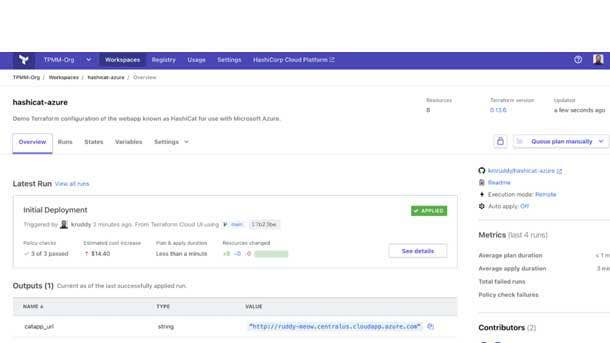
DevOps Platforms
Winner:
HashiCorp Terraform Cloud
With its Terraform Cloud offering, HashiCorp enables faster adoption of the Terraform multi-cloud provisioning solution—providing streamlined provisioning of infrastructure as well as complete management of security, compliance and operational risks. Recent enhancements have included the new Controlled Remote State Access feature, enabling granular controls to be established for state accessibility. The capability allows the state of a workspace to be shared globally within the organization—or alternatively, it can restrict the sharing to certain workspaces or prohibit sharing entirely. Other recent updates have included workspace tags, which add contextual awareness at the workspace level.
Finalists:
GitLab 14
With a focus on improving efficiency and productivity, GitLab 14 serves as a single tool for source code management, continuous integration (CI) and continuous delivery (CD). The latest version of the DevOps platform adds new capabilities such as Epic Boards, which enables ongoing communication across teams and pipeline editor templates—ensuring that CI/CD can be rapidly integrated into a development cycle, even for users who are new to CI/CD pipelines.
Rafay Kubernetes Operations Platform
With its Kubernetes Operations Platform, Rafay Systems reduces the complexity of Kubernetes operations for DevOps teams—offering streamlined lifecycle management for both Kubernetes clusters and modern apps. The platform enables deployment and management of apps across public cloud, on-premises and edge environments.
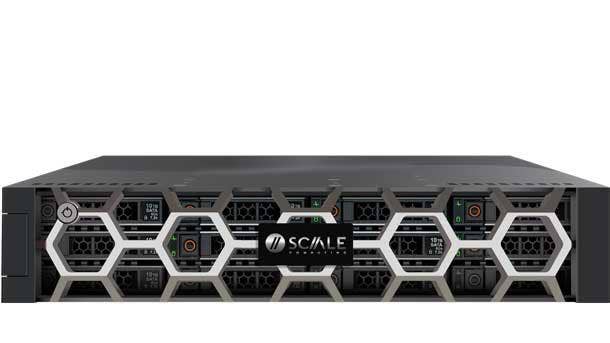
Edge Computing
Winner:
Scale Computing HC3 Video Surveillance
With the Scale Computing HC3 Video Surveillance solution, edge computing specialist Scale Computing offers a system that is purpose-built for meeting the demanding requirements of modern digital video surveillance systems. The system leverages Scale Computing’s new HyperCore for Video Surveillance technology and high-availability appliances to meet the data storage and processing needs of digital, IP-based video surveillance. The solution enables simplified management of video storage and analytics workloads in a single system, as well as automatic scale-out capabilities as resource needs grow. The offering ultimately brings the high availability and scalability of the company’s HC3 infrastructure platform to video surveillance running at the edge.
Finalists:
Oracle Roving Edge Infrastructure
A ruggedized edge device for running workloads in remote locations, Oracle Roving Edge Infrastructure ships configured with customer applications and enables data collection and processing near the data source. The portable devices, which can be synchronized to Oracle Cloud Infrastructure, offer the advantage of rapidly delivering insights from edge data.
Schneider Electric EcoStruxure IT Expert-enabled Dispatch Services
An added service for Schneider Electric’s EcoStruxure IT Expert cloud-based software, EcoStruxure IT Expert-enabled Dispatch Services enables partners to monitor customer IT in edge computing environments that they normally wouldn’t be able to access. The service provides visibility into distributed IT and on-site remediation for critical remote IT infrastructure.
StorMagic ARQvault Active Intelligent Repository
With a focus on enabling data to be gathered from anywhere, stored and searched easily, StorMagic’s ARQvault Active Intelligent Repository brings together distributed storage resources into an integrated system that is shared across a network. The solution also brings secondary storage and policies for automatically moving data to varying storage tiers, while creating low-resolution proxies of data for rapid search.
Zadara Federated Edge
Zadara’s Federated Edge enables MSPs to deploy cloud workloads anywhere by offering a global shared edge cloud network and on-demand portal for provisioning resources such as compute, storage and networking. The on-demand resources can be easily provisioned with Zadara’s Edge Cloud Services for locations worldwide.
ZEDEDA
The ZEDEDA cloud-based orchestration solution provides a simplified and scalable approach to distributed edge computing—delivering control, visibility and security. The solution also offers the flexibility of deploying apps on any hardware, as well as enabling connections to on-premises or cloud environments.
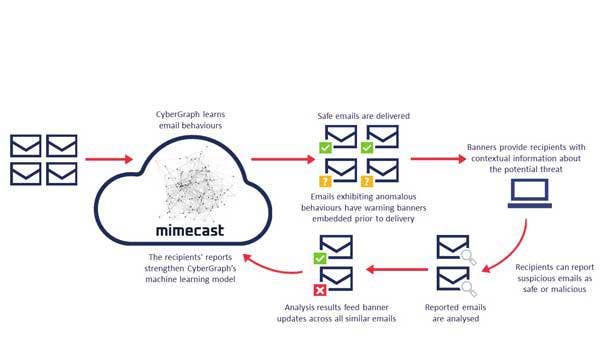
Email Security
Winner:
Mimecast CyberGraph
The Mimecast CyberGraph solution uses AI to detect impersonation and phishing attempts and prevent attacks from being successful. The solution, which is an add-on for the Mimecast Secure Email Gateway, works by creating an identity graph that stores information about sender and recipient relationships, allowing for detection of anomalies. Other key capabilities include blocking embedded trackers in emails; mask of the location of the email recipient; prevention of the threat actor’s attempts to understand the level of engagement with the malicious email; and dynamic warning banners that empower users to see if an email is potentially malicious or safe.
Finalists:
Area 1 Horizon
With Area 1 Horizon, Area 1 Security offers email protection that is cloud-native and scalable to meet the needs of organizations of any size. The solution offers preemptive email security—identifying attacks well before they are weaponized—and brings capabilities for halting advanced attacks such as phishing, ransomware and business email compromise.
Cofense Protect MSP
Using computer vision, AI and real-world phishing simulations, Cofense Protect MSP delivers rapid detection of phishing attacks. The solution is designed for MSPs and provides fast SMB customer onboarding and activation, as well as minimal management requirements.
Proofpoint Threat Protection Platform
Along with detection and blocking for a variety of email threats—including fraud, ransomware, phishing and advanced malware—the Proofpoint Threat Protection Platform provides insights and capabilities for protecting Very Attacked People with an organization. The solution offers proactive controls for protecting those individuals, including with isolation policies and awareness training.
Trustifi Cyber Security Solutions
Recent updates to Trustifi’s Cyber Security Solutions portfolio have included new sensitivity detection tools, retroactive email scans and additional enhancements to optical character recognition scanning—enabling scans of up to 1,000 past emails per inbox. Other key features include the ability to host encrypted messages on a proprietary cloud platform, allowing for editing and recalling of messages.
Vade for M365
A threat detection and response solution for Microsoft 365, Vade for M365 is aimed at MSPs and integrated with Microsoft 365 via an API. The solution scans emails using machine-learning and deep-learning technologies—blocking attacks such as ransomware, phishing, spear phishing and malware.
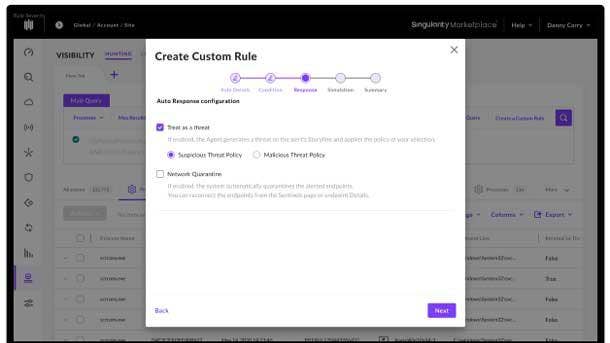
Endpoint Protection
Winner:
SentinelOne Storyline Active Response
With an aim to replace manual endpoint detection and response activities with automation, SentinelOne Storyline Active Response (STAR) offers an engine for automated hunting, detection and response that is integrated with the company’s ActiveEDR solution. STAR enables the creation of custom detection and response rules, which can be deployed in real time—to the whole network or just a subset—providing proactive threat detection and response. Other key capabilities include offering the ability to create hunting rules, which trigger an alert and an automated response when a match is detected by the rule. Additionally, STAR provides protection against novel threats without the need for a software update.
Finalists:
Check Point Harmony
With a focus on stopping sophisticated attacks, Check Point Harmony brings together endpoint and device security with browser, email and remote-access security. Key benefits include protection against known and zero-day threats across all devices and ensuring zero trust access to corporate applications.
Cybereason XDR
Cybereason XDR brings extended detection and response capabilities to enterprise environments, enabling malicious operations to be pinpointed, understood and halted across the full IT stack. The cloud-native, highly scalable solution offers XDR out-of-the-box for response to an active attack.
Malwarebytes Endpoint Detection and Response
Malwarebytes Endpoint Detection and Response offers endpoint protection along with advanced threat hunting, using a lightweight and easy-to-deploy endpoint agent. Key capabilities include anomaly detection powered by machine learning, brute force protection and 72-hour ransomware rollback.
McAfee Enterprise MVision XDR
Recent enhancements to McAfee Enterprise MVision XDR include unified score, offering a single view of security posture; threat profiling, which provides context on threat groups in order to accelerate both investigation and resolution; and universal search, offering a “Google-like” search experience for threat intelligence information.
Sophos Intercept X
Key updates to Sophos Intercept X have included the recent introduction of Sophos XDR to the product. The extended detection and response solution synchronizes key security components—endpoint, firewall, server and email protection—to offer a holistic view of an environment, rich data and deep analysis. The solution ultimately enables enhanced threat detection, investigation and response.
ThreatLocker Elevation Control
ThreatLocker Elevation Control enables creation of access policies for individuals on specific applications. The offering works with application whitelisting and ringfencing solutions to provide complete control over which applications can run, who is allowed to access the applications and the way they can interact within an environment.

Hybrid Cloud Infrastructure
Winner:
Cisco UCS X-Series
With its UCS X-Series, Cisco Systems enables customers to transform their data center operations as they move resources to the cloud. The Cisco UCS X-Series was designed with hybrid data center operations in mind, offering rack and blade systems that support workload versatility. The UCS X-Series was also designed to support future generations of technology in terms of processors, accelerators and computing interconnects. Crucially, the system is integrated with the Cisco Intersight cloud operations platform—enabling the use of tools such as the Intersight Cloud Orchestrator. The low-code automation framework simplifies complex workflows, allowing for easier orchestration of infrastructure and workloads and accelerated delivery of services.
Finalists:
Fungible Data Center
Fungible Data Center is a multi-tenant solution that enables data centers to achieve benefits of hyperscale environments such as improved cost efficiency and simplicity. The solution enables the creation of bare metal servers on-demand to meet evolving application needs—offering cloud-like agility, even at massive scale.
HVR
The HVR real-time data replication software provides a way to enable improved movement of data in hybrid environments, simplifying the delivery of large amounts of data from on-premise to cloud environments. The software runs in a distributed architecture, allowing for efficient movement of data in hybrid systems by routing data to multiple endpoints simultaneously.
PacketFabric Cloud Router
With the PacketFabric Cloud Router, private and highly efficient connectivity between regions can be enabled within a single cloud platform—without a need for hardware or ports. The solution provides a distributed virtual routing service that delivers connectivity over a software-defined networking platform.
Red Hat Enterprise Linux
Recent updates in Red Hat Enterprise Linux include new deployment options that are lightweight and targeted at supporting edge environments. Key capability additions have included simplified creation of tailored OS images for bare-metal edge devices; over-the-air updates for delivering crucial code while utilizing less data; and automatic rollbacks of OS images to a previous update to prevent downtime at the edge.
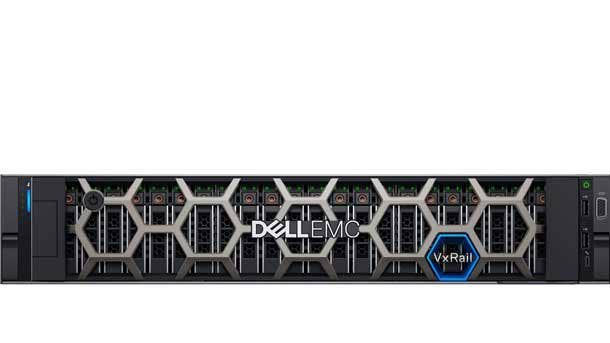
Hyperconverged Infrastructure
Winner:
Dell EMC VxRail
A hyperconverged infrastructure offering jointly developed by Dell Technologies and VMware, Dell EMC VxRail received a revamp earlier this year that added a number of new features and support capabilities. New additions included VxRail dynamic nodes—compute-only systems that can help simplify operations, improve management of storage resources and cut costs. The feature allows for the extension of VxRail environments to include options for external storage, while VMware Cloud Foundation on VxRail can be configured with dynamic nodes to use Dell’s PowerStore, PowerMax or Unity XT as primary storage. Additionally, recent VxRail updates added support for Dell’s latest PowerEdge servers featuring Intel’s third-generation Xeon Scalable processors or AMD’s third-gen EPYC processors.
Finalist:
IBM Spectrum Fusion HCI
IBM Spectrum Fusion HCI is a hyperconverged solution that is pre-built to run containerized workloads, with resources that are optimizable for a variety of AI- and data-centric applications. Key capabilities include the ability to connect data silos and merge compute and storage resources for a lower total cost, as well as support for GPU-accelerated applications with Nvidia A100 GPU nodes.
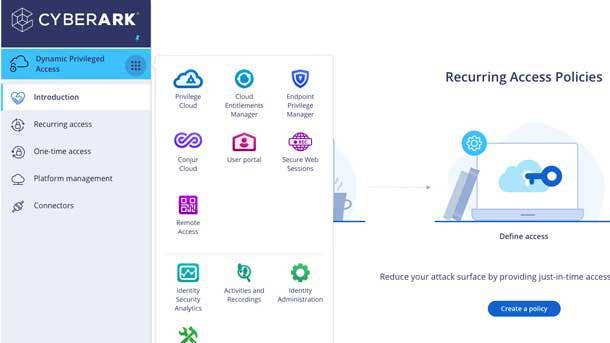
Identity and Access Management
Winner:
CyberArk Identity Security Platform
With a focus around privileged access management, the CyberArk Identity Security Platform provides secure access for all applications and across both cloud and on-premises environments. Recent updates to the platform have included new offerings such as Dynamic Privileged Access for provisioning access hybrid and cloud workloads that is “just in time,” lowering the risk of standing access. Other updates have included Secure Web Sessions, which provides added security for access to browser-based applications that are considered high-risk; Lifecycle Management for Privileged Users, which speeds up employee onboarding; and cloud-native shared services such as a unified identity management, authentication and authorization layer.
Finalists:
Cisco Duo
Recent enhancements to Cisco Duo have included updates to its Duo Network Gateway that enable automatic deployment in Amazon Web Services; the addition of Duo Trust Monitor, which uses machine learning to detect anomalous behavior while analyzing access; and a cloud-delivered single sign-on solution for rapid enablement of secure application access.
Ivanti Neurons for Zero Trust Access
Key capabilities for the Ivanti Neurons for Zero Trust Access solution include authentication of user identity and device security posture prior to initiating a session; self-securing and self-healing capabilities; and user behavior analytics that enable proactive action around security risks.
JumpCloud Protect
JumpCloud Protect enables easier deployment and enforcement of multi-factor authentication (MFA). The solution, which is available for iPhone and Android devices, offers MFA for identity verification based on criteria including location, device trust, network trust and step-up challenges that are specific to the application.
Ping Identity: PingOne Cloud Platform
The recently launched PingOne Cloud Platform provides a single location for managing all Ping Identity products and services. Components of the platform include PingOne for Customers, which provides options such as single sign-on and multi-factor authentication, and PingOne for Workforce for connecting employees, contractors or partners to resources using cloud authentication and single sign-on access.
SecurID
An RSA business, SecurID brings passwordless sign-in options that support multi-factor authentication such as mobile push-to-approve, FIDO2 security keys and biometrics. Key enhancements include cloud management of one-time passcode hardware tokens, in addition to management through on-premises systems.
Transmit Security: BindID
Transmit Security’s BindID is an app-free authenticator that leverages device-based biometrics for customer authentication, eliminating the need for passwords. The solution works by leveraging shared trust at the user, device and network levels, enabling other biometric-enabled devices to be associated with accounts.
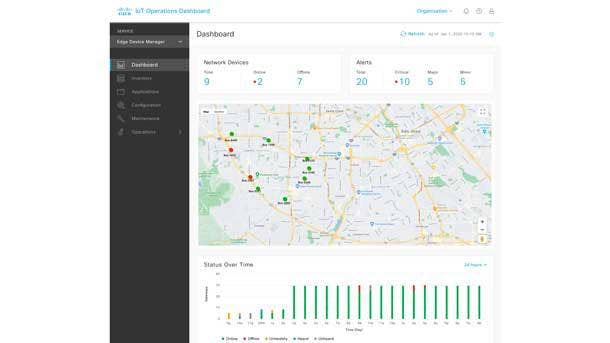
IoT
Winner
Cisco IoT Operations Dashboard
Aimed at enabling secure deployment and monitoring of industrial networking devices, the Cisco IoT Operations Dashboard offers zero-touch provisioning of devices along with a user-friendly interface for onboarding devices. Other key features include Cisco-validated network design configurations, role-based access and incident alerts. Additional notable capabilities include secure equipment access, using only a browser, to devices that are connected to Cisco industrial routers via the cloud—as well as support for operational workflows that can be used to configure IoT devices or troubleshoot device issues.
Finalists:
Asimily ProSecure
With a focus on medical devices that are intended for connection to a network, Asimily ProSecure provide evaluation of the risk profile of such devices—as well as hardening and configuration capabilities, recommendations and full risk modeling. The web application works by aggregating data from health systems, anonymizing the data and coming up with a risk score.
Kisi Security: Kisi Reader 2
Kisi Security’s Kisi Reader 2 is a door access control solution that enables touchless access using a smartphone, smartwatch, card or waving of a hand. The reader can be used with wired and wireless connectivity—including Bluetooth and NFC—and offers simplified installation thanks to compatibility with existing door frames and cables.
Nextivity Cel-Fi GO Smart Signal Booster
With Nextivity’s Cel-Fi GO Smart Signal Booster, applications for the cellular coverage solution include IoT applications and smart manufacturing operations. The solution offers leading signal gain of up to 100 dB for cellular connectivity, including 4G and 5G. The Cel-Fi GO Smart Signal Booster can be used indoors or outdoors, in stationary or mobile use cases, and can withstand environmental conditions such as water and dust exposure.
Phizzle EDGMaker Digital Air Series
Phizzle’s EDGMaker is an IoT solution for remote operation of multiple scientific instruments—including from different brands—using a centralized, cloud-based interface. The solution brings the control and integration of data from different devices into a single place for use in automated workflows.
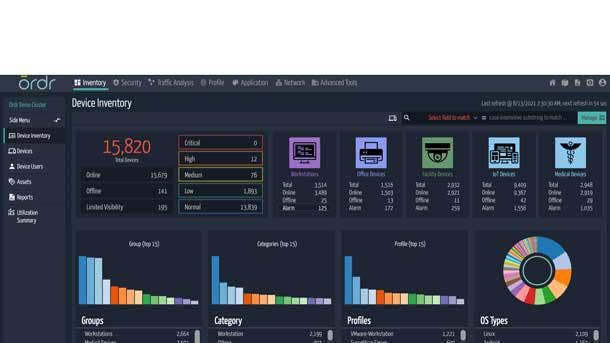
IoT Security
Winner:
Ordr Systems Control Engine (Release 7.4.2)
Ordr has brought forward a major update to its Systems Control Engine with Release 7.4.2, including more than 160 new features and integrations. The solution secures all connected devices, both managed and unmanaged—by discovering all devices, profiling the behavior and risks of the device and providing an automated response. New features in Release 7.4.2 include a reduced infrastructure footprint with visibility using telemetry data rather than sensors; workflow-based dashboards to enable rapid lookup of devices matching certain conditions; and security updates including optimizations for tracking and detection on the platform.
Finalist:
DigiCert ONE
Focused on enabling the delivery of security solutions based on public key infrastructure (PKI), DigiCert ONE offers a centralized method of providing comprehensive management of users and device certificates. The solution uses a cloud-native, container-based architecture and enables partners to harmonize security across IoT, DevOps, documents and the enterprise.
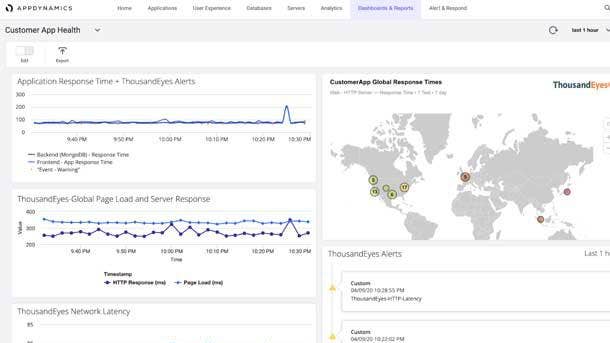
IT Infrastructure Monitoring
Winner:
Cisco: ThousandEyes Internet and Cloud Intelligence in AppDynamics Dash
Following Cisco Systems’ acquisition of network monitoring firm ThousandEyes last year, Cisco has been working to integrate the firm’s technologies into its product portfolio—including into AppDynamics’ custom data visualization and dashboards solution, AppDynamics Dash Studio. Cisco has brought over ThousandEyes capabilities around network and internet performance metrics into AppDynamics Dash Studio, providing a common operating language across network, application and cloud. This full-stack observability allows for rapid isolation and resolution of issues throughout the digital ecosystem. The integration of ThousandEyes technology ultimately provides a complete view of application experience—enabling data to be more easily uncovered and visualized, for improved insights and faster remediation.
Finalists:
Cyxtera Portal
For monitoring of assets across multiple sites, the Cyxtera Portal serves as a unified solution for real-time monitoring and management of all aspects of a data center—covering everything from hardware monitoring and maintenance to personnel management. Other key features include automation of recurring tasks and entire workflows.
New Relic Explorer
New Relic Explorer enables users to visualize and explore their telemetry data across all sources, including from infrastructure hosts, mobile apps, cloud APIs and distributed services. The capabilities allow for rapid identification of anomalies and restoration of systems.
SolarWinds APM Integrated Experience
For SolarWinds’ application performance management solutions—including AppOptics, Loggly and Pingdom—the SolarWinds APM Integrated Experience offers consolidated access to metrics, traces, logs and user experience data. This streamlined visibility into application and infrastructure performance ultimately provides users with lower complexity in their APM usage.
Splunk Observability Cloud
With Splunk‘s recently debuted Observability Cloud, the company brings all necessary observability solutions together into a unified interface for a comprehensive view across an organization’s data. The offering incorporates existing Splunk products including Splunk Log Observer, Splunk Real User Monitoring, Splunk Infrastructure Monitoring, Splunk APM and Splunk On-Call.
Virtana Platform
Virtana’s unified observability platform enables optimization, management and migration of workloads across the entire IT infrastructure, both in the cloud and on-premises. Using machine learning and analytics, the platform brings the ability to understand workloads on a deep level, ultimately enabling smarter decisions about cloud migrations and optimizations.
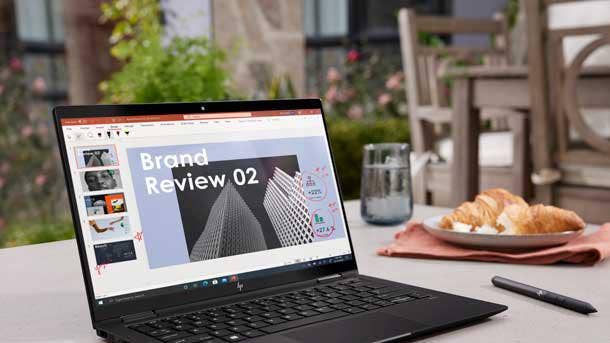
Laptops
Winner:
HP Elite Dragonfly Max
New this year, HP’s Elite Dragonfly Max stands out with enhanced collaboration features, a portable design and strong performance via 11th-gen Intel processors. In terms of collaboration, the convertible notebook includes a 5-megapixel camera, four wide-range mics optimized for conferencing and a quad speaker system driven by four amplifiers. On portability, the notebook is lightweight at 2.49 pounds, and also thin, measuring 0.63 of an inch—while still allowing for work-friendly ports including USB-A, HDMI and USB-C. Other key features include optional 5G connectivity; up to 16.5 hours of battery life; and a 13.3-inch touch display offering high brightness (up to 1,000 nits), reduced blue light technology and an optional integrated privacy screen.
Finalists:
Acer TravelMate Spin B3
A convertible Windows notebook targeted for education, Acer’s TravelMate Spin B3 comes with a 5-megapixel webcam, optional LTE connectivity and up to 12 hours of battery life. The 11.6-inch notebook also offers strong durability with a spill-resistant keyboard and an Antimicrobial Corning Gorilla Glass display, as well as additional antimicrobial solutions on the keyboard, palm rest and touchpad.
Lenovo ThinkPad X1 Nano
Lenovo’s ThinkPad X1 Nano is the lightest ThinkPad to date, with a starting weight of just 2 pounds, while measuring just over a half-inch thick. The 13-inch display features a 16:10 aspect ratio that makes the display taller—providing a greater amount of usable workspace—while also offering sharp resolution (2,160 x 1,350) and high brightness (450 nits). Other features include up to 17 hours of battery life, four speakers and four mics, enhanced security (including a match-on-sensor fingerprint reader) and optional 5G.
Samsung Galaxy Book Pro
Samsung’s Galaxy Book Pro offers a choice between a 13.3-inch or 15.6-inch displays featuring vibrant Super AMOLED technology—making them among Samsung’s first Windows PCs to offer AMOLED displays. On portability, the notebook has a starting weight of just 1.9 pounds and measures 0.44 of an inch thick (for the 13.3-inch model). For collaboration, Samsung has upgraded the multi-mic array to filter out background noise while also including AKG speakers with Dolby Atmos tuning.
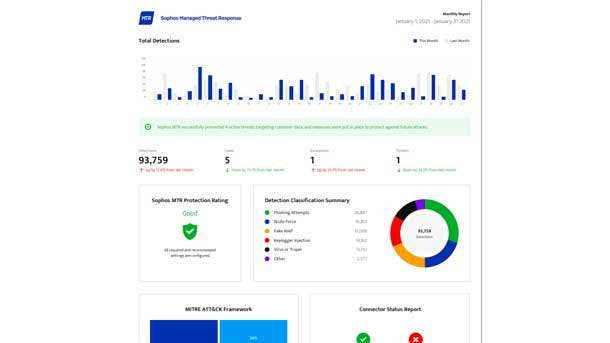
Managed Detection and Response
Winner:
Sophos Managed Threat Response
Focused on threat hunting, detection and response, Sophos Managed Threat Response offers a fully managed and customizable approach to finding and stopping cyber threats—which is capable of meeting the needs of all customer sizes, including SMBs. Key additions to the offering over the past year have included Sophos Rapid Response, a remote incident response service that activates a 24/7 team to halt in-progress attacks—such as ransomware—and eliminate attackers from the network. The service entails a 45-day, fixed-fee engagement, and the service team can activate in as little as a few hours and triage most attacks within a 48-hour timespan. Leveraging both human analysis and machine-learning technology, Sophos Rapid Response ultimately offers the ability to quickly find and neutralize sophisticated threats.
Finalists:
eSentire Cyber Investigations Portfolio
With its recently launched Cyber Investigations Portfolio, eSentire offers remote threat suppression in just four hours, backed by a service level agreement guarantee. Services include emergency incident response, digital forensics investigations and security incident response planning.
Graylog Enterprise v4.0
Graylog Enterprise v4.0 offers centralized log management, reduced alert noise and key capabilities for security analysts—such as enabling analysts to create dashboards, search templates and reports. The platform ultimately helps with identification of breaches, proactive hunting for threats and investigation of known issues.
ReliaQuest GreyMatter
A recently added set of capabilities in GreyMatter, ReliaQuest’s open XDR-as-a-Service platform, allow security operations teams to improve detection, threat hunting and ease of management. The updates extend the ability for analysts to quickly see what their coverage is, while also enabling analysts to drill down into specific detections to understand how a rule was triggered.
Secureworks Taegis ManagedXDR
Launched earlier this year, Secureworks Taegis ManagedXDR brings together the company’s security operations know-how with advanced threat intelligence to provide threat detection and response across environments. The cloud-native solution covers endpoints, cloud environments and networks, helping to cut down on SOC costs while filling gaps in cybersecurity skills.
Stellar Cyber Open XDR Platform v4.0
With version 4.0 of its Open XDR Platform, Stellar Cyber improves efficiency and performance for security analysts by incorporating the loop interface of the XDR Kill Chain. This brings in a kill chain that is more realistic, providing a clear view of attack issues along with precise steps for remediation.

Monitors
Winner:
Dell UltraSharp 40 Curved WUHD Monitor (U4021QW)
Earlier this year, Dell debuted what it called the first 40-inch ultrawide curved WUHD monitor on the market. Dell’s UltraSharp 40 Curved WUHD Monitor (U4021QW) is aimed at work-from-home professionals seeking an immersive visual experience, with its impressive 5K WUHD (5,120 x 2,160) resolution, wide color coverage and sizable curved display. For enhanced audio, the monitor also includes dual 9W speakers. Other features include ComfortView Plus, which brings low blue light technology to the screen to reduce harmful emissions of blue light without affecting color accuracy.
Finalist:
ViewSonic VP3481a ColorPro Monitor
The ViewSonic VP3481a ColorPro Monitor offers a 34-inch curved display with sharp resolution of WQHD+ (3,440 x 1,440), high color accuracy and a 21:9 aspect ratio. The display also offers features for smooth playback, including a 100Hz refresh rate and AMD’s FreeSync technology.
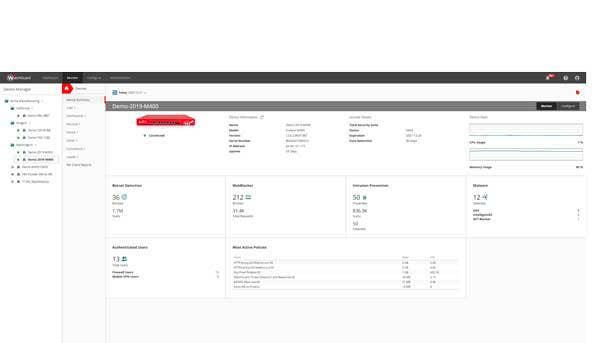
MSP/MSSP Platforms
Winner:
WatchGuard Cloud
With the goal of simplifying and improving the way that managed services providers bring security to their customers, the WatchGuard Cloud platform recently received a number of major updates including a centralized new interface for MSPs. The update makes life easier for MSPs by providing a single location for delivering and managing customer security across network security, advanced threat detection and multi-factor authentication (MFA). Other key enhancements include simplified network policy creation and management; the addition of WatchGuard’s ThreatSync threat correlation service; and enablement of risk-based MFA as a way for MSPs to bring zero trust security to their customers.
Finalists:
Druva Managed Services Center
A multi-tenant SaaS solution for MSPs, Druva’s Managed Services Center offers rapid onboarding for customers to the Druva Cloud Platform without the need for managing hardware infrastructure. The solution provides MSPs with management capabilities for customized service levels, visibility into storage consumption and a real-time view of customer health.
Liongard
With a focus on providing unified visibility for MSPs, the Liongard platform continually gathers data from cloud environments, network systems, endpoints, apps and services. The platform brings an automated approach to discovery, documentation and auditing—enabling MSPs to secure their clients, scale operations and standardize processes.
MSP360 RMM
With MSP360 RMM, MSPs can simplify their management of IT infrastructures with a single location for remote monitoring and management. Key features include system resource monitoring, performance monitoring, antivirus management, Windows patch management and PowerShell scripting.
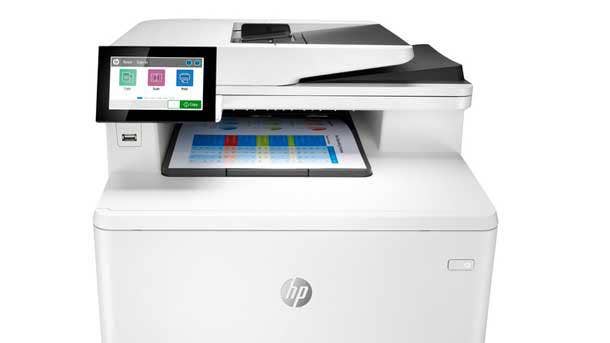
Multifunction Printers
Winner:
HP LaserJet Enterprise 400 Series
Seeking to meet the needs of the at-home workforce, HP’s LaserJet Enterprise 400 Series offers a reduced form factor paired with numerous business-friendly features. The series offers the most compact enterprise-ready experience available from HP, along with more than 100 embedded security features. Key capabilities for businesses include fleet-wide remote management, run-time intrusion detection and self-healing from cyber attacks. With the Color LaserJet Enterprise MFP M480f, a multifunction model in the series, HP provides print speeds of up to 29 pages per minute, copying speeds of up to 28 pages per minute and two-sided scanning speeds of up to 49 pages per minute. The MFP also features an 850-sheet maximum capacity, a 4.3-inch color touch screen and printing from mobile devices.
Finalist:
Epson WorkForce Enterprise WF-C21000 Color
Epson’s WorkForce Enterprise WF-C21000 is a color A3 multifunction printer offering fast print speeds of up to 100 pages per minute, both for black or color. The MFP also offers finishing options such as stapling, stacking, hole punching and booklet making, with finishing speeds that are double that of the predecessor model.
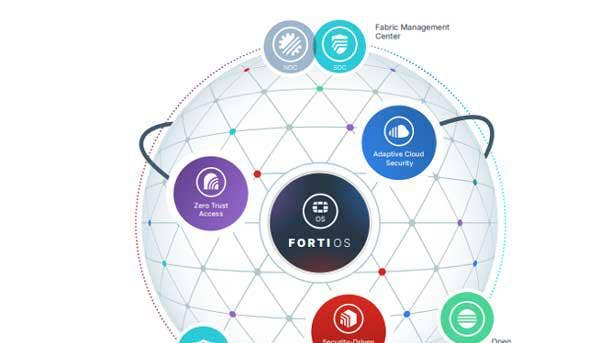
Network Security - Enterprise
Winner:
Fortinet FortiOS 7.0
With its FortiOS 7.0 operating system, Fortinet has rolled out more than 300 new features including zero trust network access (ZTNA) for remote access and application control. The capability allows for “out of the box” deployment of ZTNA—reducing the attack surface, hiding key applications from the web and improving user experience. Through the update, Fortinet says it’s now the only company to offer ZTNA that is firewall-based. Other key additions in FortiOS 7.0 include improved security consistency using secure access service edge (SASE) capabilities; self-healing SD-WAN; enhanced wireless network performance; optimizations for performance and security in multi-cloud deployments; and improvements to Fortinet’s web protection solution that are focused on securing work-from-home.
Finalists:
Appgate SDP Clientless
With the Appgate Software Defined Perimeter (SDP) platform, one-to-one connections between users and resource locations can be created—while identity-focused, network-level access policies can be dynamically enforced. The platform ultimately provides access to protected resources that is clientless and browser-based.
Fastly Security Pro Pack
The Fastly Security Pro Pack is a web application firewall offering, which provides protection against cyber attacks through detecting and blocking malicious traffic without the need for rules tuning. The offering—available on the AWS Marketplace, including through AWS Consulting Partners—ultimately provides scale for protection of web applications and APIs.
Gigamon ThreatINSIGHT Guided-SaaS NDR
Bringing together network detection and response capabilities with human expertise, the Gigamon ThreatINSIGHT Guided-SaaS NDR offers deep visibility into the network activity of all devices, advanced detection of adversary behavior, and threat hunting and investigation—ultimately accelerating incident response.
Infoblox 3.0
With Infoblox 3.0, the company’s Network Identity Operating System (NIOS) on-premises solution comes together with two cloud-native platforms from the vendor—BloxOne DDI and BloxOne Threat Defense. Unifying the platforms allows customers to get the benefits of both on-premises and cloud, such as reliability and scalability, for their network and security needs.
SonicWall Gen 7 Network Security appliance (NSa) Series
For Gen 7 of its Network Security appliance Series, SonicWall offers strong performance and port density along with capabilities such as malware analysis, inspection of encrypted traffic and URL filtering. Additional networking features include high availability, dynamic and virtual routing, and SD-WAN.
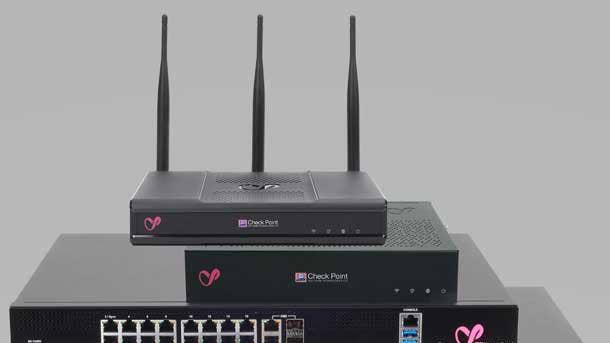
Network Security - SMB
Winner:
Check Point Quantum Spark
With its Quantum Spark series of gateways for SMBs, Check Point Software Technologies offers protection against advanced attacks on the network along with simplified deployment and management—reducing the need for cybersecurity skills within an SMB organization. Key capabilities for Quantum Spark include automated threat prevention, leveraging Check Point’s SandBlast Zero Day Protection and its more than 60 threat prevention services; rapid set-up through zero-touch provisioning; connectivity options including Gigabit Ethernet, Wi-Fi and integrated LTE modems; and management using any browser or via Check Point’s WatchTower mobile app, allowing for threat monitoring and mitigation directly from a mobile device.
Finalists:
Perimeter 81 Cloud Firewall
Perimeter 81 Cloud Firewall offers simplified management for customer networks, network resources and apps through a single point; visibility into granular network access throughout an organization; prevention of vulnerabilities; and an assurance that restricted apps, data and network resources can only be accessed by authorized personnel.
SonicWall SMA 100
SonicWall Secure Mobile Access (SMA) 100 Series offers secure remote access to corporate resources—from any device in any location, at any time—whether those resources are located on-premises or in the cloud. Advanced control options include a granular policy engine, app-level VPN and context-aware authorization capabilities.
Sophos Firewall
Recent updates to Sophos Firewall include the debut of new XGS Series appliances offering enhanced protection against zero-day threats. Among the key capabilities is improved TLS inspection of encrypted traffic—including native TLS 1.3 support—offering a 5X boost on speed.
Untangle Network Security Framework
Untangle’s Network Security Framework offers protection by bringing together the company’s NG Firewall and SD-WAN Router solutions. Untangle’s NG Firewall brings easy-to-configure protection policies and advanced filtering, while the company’s SD-WAN Router solution enables routing of traffic over a software-defined network.
WatchGuard Firebox M4800 and M5800
Aimed at meeting the network security needs of both in-office and at-home workforces, WatchGuard’s Firebox M4800 and M5800 appliances offer scanning engines to secure networks from spyware, malicious apps, botnets and viruses. The appliances provide security for all communications between an organization’s central office, remote employees and other business sites.
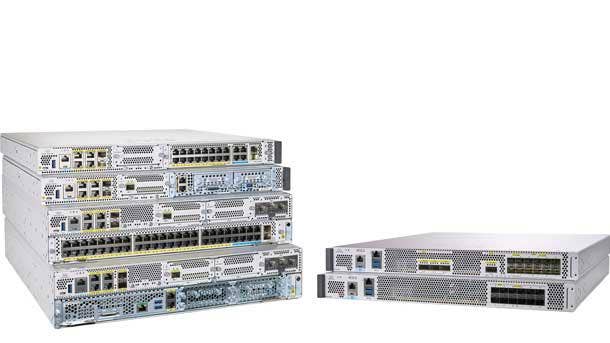
Networking - Enterprise
Winner:
Cisco Catalyst 8000 Edge Platform
With the Catalyst 8000 Edge Platform, Cisco Systems addresses the complicated requirements of modern networking environments, including edge application support, evolving SD-WAN needs and multi-cloud architectures. Included in the series are the Catalyst 8500 Series Edge Platform, aimed at large-scale data center or colocation sites with integrated 40G and 100G Ethernet ports in a single rack unit. The 8500 is powered by Cisco’s proprietary ASIC for high-performance, scale and integrated security. The Catalyst 8300 Series Edge Platform brings a focus on enabling connectivity at branch sites, offering a variety of connectivity choices as well as enhanced SD-WAN performance. The Catalyst 8000V Edge Software provides the capabilities of the 8500 and 8300 in a software format, and can be deployed in a cloud or virtualized environment.
Finalists:
Ciena 5168 xHaul Router
Ciena 5168 xHaul Router enables faster, simpler deployments of private 5G using a common infrastructure and 1/10/25GbE to 100/200GbE aggregation. The router offers support for both hard and soft network slicing (FlexEthernet and Segment Routing), and combines current-generation Broadcom ASIC and Intel FPGA to offer high programmability and a powerful feature set.
Extreme Networks: ExtremeSwitching 5520 Series
With the ExtremeSwitching 5520 Series, Extreme Networks offers high-performance universal edge and aggregation switches—with options including 24- and 48-port, 1-Gigabit models; 1-, 2.5- or 5-Gigabit multi-rate model; and a 24-port, 10-Gigabit model. Key features include secure, end-to-end network segmentation, as well as multi-watt power over Ethernet (PoE).
Fortinet FortiGate Rugged 60F
Focused on taking SD-WAN to new locations, Fortinet’s FortiGate Rugged 60F enables operational technology (OT) environments to deploy SD-WAN by bringing together advanced routing and firewalls with SD-WAN in a compact-sized appliance. The solution is also designed for OT sites that require specific mounting and power options.
Pluribus Adaptive Cloud Fabric
A solution for data center fabrics with network virtualization and automation, the Pluribus Adaptive Cloud Fabric brings cloud-like benefits such as efficiency and agility to data center networks. Recent updates include support for automation capabilities that enable multi-vendor interoperability as well multi-fabric interconnection.
WiteSand
A cloud-native, multi-tenant solution, WiteSand offers capabilities including network access control, asset discovery, monitoring and analytics, and wired/wireless provisioning. The functionality—all of which is available through a single, cloud-based interface—also includes a unique feature that reveals the full history of changes and events in the network.
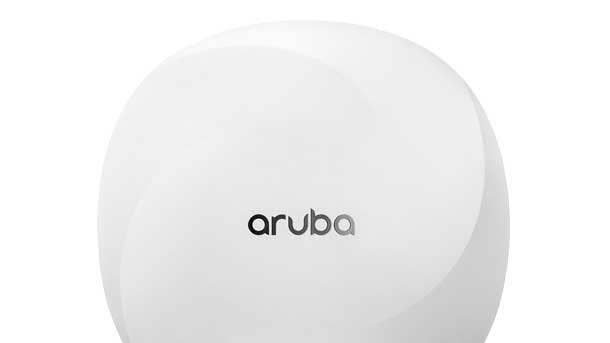
Networking - Wireless
Winner:
Aruba, a Hewlett Packard Enterprise company: Aruba 635 Campus Access Point
With the Aruba 635 Campus Access Point, Aruba has brought forward the market’s first enterprise-grade Wi-Fi 6E access point—making use of the massive amount of additional spectrum now available through the opening up of the 6 GHz band. Offering Wi-Fi 6E provides customers with faster connections, lower congestion and broader channels. The Aruba 635 Campus Access Point offers speeds of up 3.9Mbps—using three dedicated radios, which cover the 2.4 GHz and 5 GHz bands in addition to 6 GHz—enabling high bandwidth and low latency even for demanding services such as IoT, video and AR/VR. A part of the Aruba Edge Services Platform (ESP), the access point also benefits from Aruba ESP capabilities such as prediction and resolution of device issues before they become a problem; data analysis and identification of anomalies; and securing of unknown devices connected to the network.
Finalists:
Cradlepoint E3000 Series Enterprise Router
Recent updates to the Cradlepoint E3000 Series of enterprise routers have included a new model focused on enterprise branch deployment, enabling deployment of a wireless WAN via LTE, 5G and Wi-Fi 6. The router enables customers with the first native 5G modem for branch deployment in the market, according to Cradlepoint.
TP-Link USA EAP660HD AX3600 Wireless Ceiling Mount Access Point
With its EAP660HD AX3600 wireless ceiling mount access point, TP-Link meets the needs of environments that require multi-device and high-density wireless connections—offering simultaneous Wi-Fi speeds of 1,148 Mbps on 2.4 GHz and 2,402 Mbps on 5 GHz. Other key capabilities include zero-touch provisioning, intelligent monitoring and centralized cloud management.
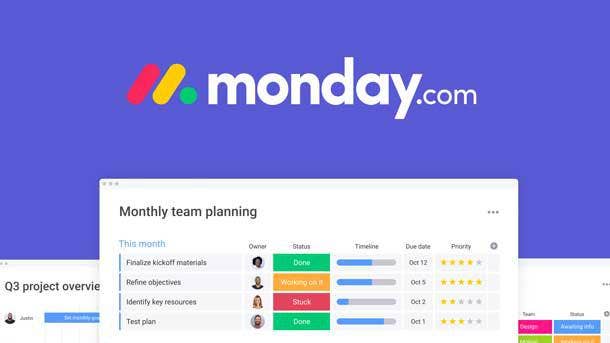
Office Productivity Software
Winner:
Monday.com Work OS
With its cloud-based work operating system, Monday.com offers a no-code/low-code platform that enables the creation of custom apps and tools for work management. The Work OS platform provides building blocks, which can be utilized through drag-and-drop and easy-to-use recipes, to build workflow apps that are specific to an organization or team. Key capabilities include the ability to integrate Work OS apps with other platforms such as Microsoft Outlook and Teams, Zoom and Gmail, while users can also make their building blocks and apps available in Monday.com’s marketplace. Work OS ultimately allows organizations to improve their productivity and agility, with purpose-built apps that meet specific team needs.
Finalists:
Citrix Workspace
Citrix Workspace provides workers with secure access to applications, workflows and data—in a centralized platform—from any device, location or network. Recent updates have included new workflows that aim to support employee wellbeing along with a redesigned browser experience for the platform.
Dropbox Enterprise
Key security-focused features in the Dropbox Enterprise content management and collaboration workspace include data classification (to help prevent exposure of sensitive data); external sharing reports (providing insights on how data is being shared externally); and data governance (enabling customers to set data retention policies, and more easily meet their compliance and regulatory requirements).
Sage Intelligent Time
With an aim toward helping service professionals to automate their time entry, Sage Intelligent Time offers an AI-driven assistant that automatically captures all billable time for a user. The assistant—built into the cloud-based Sage Intacct financial management system—is available on the web or via mobile app, and ultimately reduces the chances of under-billing or failing to bill a customer.
Snow Software: Snow Spend Optimizer
With the Snow Spend Optimizer, Snow Software enables discovery, management and optimization of software-as-a-service applications—providing visibility for the apps being used within an organization, along with insights into who and where the apps are being used. The solution can help enable a reduction in SaaS app sprawl, consolidation of redundant apps and investment in under-served areas.
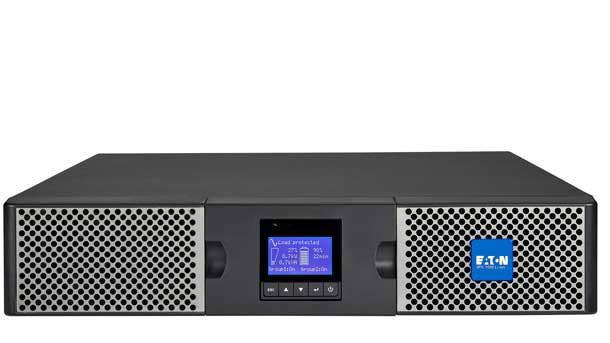
Power Protection and Management
Winner:
Eaton 9PX Lithium-ion Uninterruptible Power Supply
With the recent debut of the Eaton 9PX Lithium-ion Uninterruptible Power Supply (UPS), power management firm Eaton has debuted a number of enhancements in its UPS technology. The enhancements include improved battery lifespan and a smaller form factor—with an eye toward serving the needs of edge and light industrial environments. Eaton’s 9PX UPS offers a battery lifespan of up to eight to 10 years, compared to an average of three to five years for a comparable UPS that uses lead-acid batteries. The 9PX also offers a more-compact footprint, with a 1U form factor rather than 2U—as well as a 20-percent lighter rackmount model or 40-percent lighter extended battery module versus counterpart UPS models with lead-acid. The UPS also benefits from use with Eaton’s PredictPulse remote monitoring service, with capabilities including predictive analytics about potential component failures and remote diagnosis of issues.
Finalists:
CyberPower: PowerPanel Cloud and Cloud Cards
CyberPower’s PowerPanel Cloud and Cloud Cards offer simplified UPS monitoring via mobile or desktop app, enabling remote monitoring that’s available even on-the-go. Key capabilities include a dashboard with a quick view of UPS status, power conditions and problem identification—while event logs enable troubleshooting and prevention of power issues.
Schneider Electric Square D Easy UPS 3S
Schneider Electric’s Square D Easy UPS 3S is a 10-40 kVA 208V three-phase uninterruptible power supply aimed at simplifying business continuity, with easier installation, use and servicing. Other key features include a compact form factor, user-selectable efficiency modes, advanced overload protection and up to 98-percent efficiency.
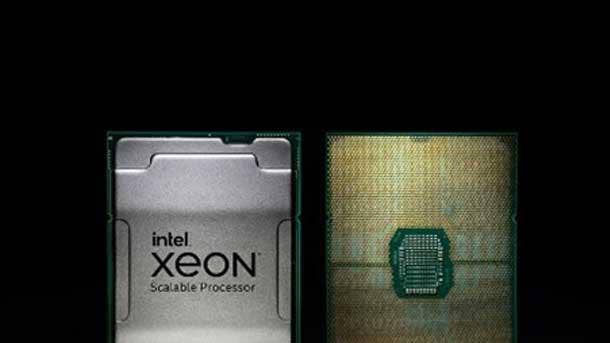
Processors
Winner:
Intel Xeon Scalable Processors, 3rd Gen
With Intel’s latest line of third-generation Xeon Scalable Processors, code-named Ice Lake, the chipmaker has brought forward major advancements around enabling AI, cryptography, high-performance computing (HPC) and other workloads. The first server processor line to use Intel’s 10-nanometer manufacturing process, the Ice Lake Xeon Scalable Processors bring an increase of Xeon’s maximum core count to 40 from the previous generation’s 28. Key advancements include 74-percent faster AI performance over the prior generation—through deploying Intel’s DL Boost instruction set and software optimizations—as well as significantly enhanced performance for cryptographic algorithms. For HPC workloads, Intel promises up to 18-percent faster performance than competing processors on the Linpack benchmark used to measure the world’s top supercomputers. The Ice Lake lineup brings applicability to a range of other workloads, as well, such as in cloud and 5G—with 50-percent faster performance for latency-sensitive workloads in the cloud over second-gen Xeon Scalable, and up to 62-percent faster performance for 5G network workloads.
Finalists:
AMD EPYC 7003 Series Processors
AMD’s EPYC 7003 Series Processors offer massive server performance with up to 64 cores per processor featuring AMD’s Zen 3 core architecture. Key use cases include high-performance computing, where the EPYC 7003 processors accelerate time to discovery with increased I/O and memory throughput; cloud, where the processors provide the highest core density available along with robust security capabilities; and enterprise, with transactional database processing improvements of up to 19 percent.
Fungible DPU
With a focus on improving performance, reliability, security and economics of scale-out data centers, the Fungible Data Processing Unit (DPU) microprocessor is targeted as a complement to the CPU and GPU. The Fungible DPU brings a programmable data-path engine capable of dramatically accelerating computations, along with a new network engine offering a number of benefits—including low latency, high bandwidth, control for errors and congestion, and strong security even at large scale.

SD-WAN
Winner:
VMware SD-WAN
A part of VMware’s cloud-delivered secure access service edge (SASE) platform, the VMware SD-WAN offering brings together capabilities including WAN edge, edge compute and cloud-based security. With optimizations for mission-critical apps—as well as its positioning between the app overlay and service provider—the platform enables high performance and availability for applications. The VMware SD-WAN offering has received a number of recent enhancements, including in the realm of security—with the platform seeing the addition of capabilities such as Secure Web Gateway and Zero Trust Network Access, aimed at meeting the security needs of distributed workforces. Other key functionality on the platform includes automation and zero-touch provisioning for simplified operations.
Finalists:
Aryaka SmartSecure Private Access
A recent addition to the Aryaka SmartServices SD-WAN and SASE platform, SmartSecure Private Access offers VPN for all device operating systems—with an orchestration and security architecture that stands out by providing tight coupling of SD-WAN branch and remote office deployments.
Cisco SD-WAN powered by Meraki
Recent updates to the Cisco SD-WAN offering include an extension of the secure SD-WAN fabric from Cisco Meraki MX appliances into Cisco Umbrella. The appliances now provide a unified solution for optimal SD-WAN connectivity that brings together on-premises security and cloud-driven security intelligence.
Masergy SD-WAN Secure
Recent enhancements to the Masergy SD-WAN Secure solution have included updated AIOps capabilities for automation of network management and boosted performance for cloud apps. The AIOps functionality enables prediction and prevention of service outages, recommendations for proactive measures to improve performance and bandwidth utilization alerts in real-time.
Versa SASE Services
Recently added Versa SASE Services include Versa Secure Web Gateway, which provides secure internet access for workers across offices, homes and mobile usage—with capabilities including URL filtering, advanced firewall and malware protection. Another recent Versa SASE addition, Versa Cloud Access Security Brokers, provides protection for critical data both while it’s in transit and in the cloud.
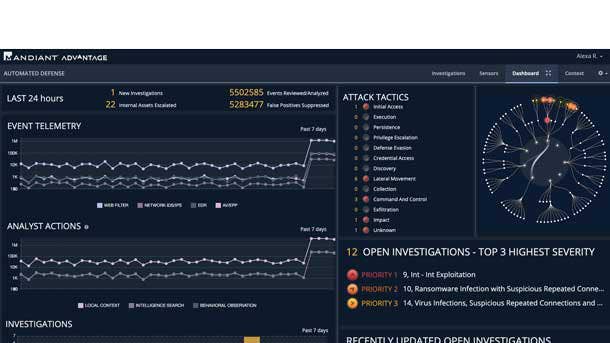
Security Management
Winner:
Mandiant Automated Defens e
With the Mandiant Advantage platform, Mandiant is focused on providing discovery, monitoring and management of security risk across a customer’s attack surface—including with recently added capabilities such as Automated Defense. The addition of the Mandiant Automated Defense module enables triaging of alerts at rapid speed, even at a large scale, while preserving consistency. The module leverages machine learning and data science technologies to bring automation to the triage process, allowing security teams to focus on the most critical threats. Along with Automated Defense, the Mandiant Advantage platform also includes modules that cover Threat Intelligence, Security Validation and Attack Surface Management.
Finalists:
Arctic Wolf Managed Security Awareness
With Managed Security Awareness, Arctic Wolf offers a security awareness training solution that boosts engagement—and effectiveness—by delivering fresh content on a regular basis, which is updated based on current trends and threats. The training solution engages employees several times per month in micro-learning sessions, and is also fully managed with support from a dedicated concierge security team.
CyCognito Platform
Recently added features for the CyCognito Platform include capabilities to enable full automation of external attack surface management practices, bringing the practices into current workflows for risk and vulnerability management. The platform dramatically reduces human effort by integrating with applications including asset management, reporting, risk management and security operations.
FireMon Agile NSPM
FireMon’s agile network security policy management (NSPM) platform provides capabilities including a unified interface for cloud security policies; an orchestration API that is highly flexible, enabling integrations with any process or system; robust SD-WAN and SASE support; customizable workflows; and FireMon’s Security Intelligence Query Language with Elasticsearch technology for granular search across all network objects.
Hunters XDR
With the Hunters XDR solution, capabilities include proactive detection and response for threats across endpoint, email, network, identity and cloud. The cloud-delivered solution leverages massive amounts of organizational data and security telemetry to uncover threat signals—then provides security teams with the details and context needed to effectively investigate and respond.
Tenable.ad
The Tenable.ad provides capabilities for discovery and prioritization of Active Directory vulnerabilities and misconfigurations, enabling security teams to put a stop to attack paths before they’re exploited. The solution covers everything from discovery of weaknesses prior to an attack, to detection and response to attacks in real-time, to providing attack insights to SIEM, SOC or SOAR systems.
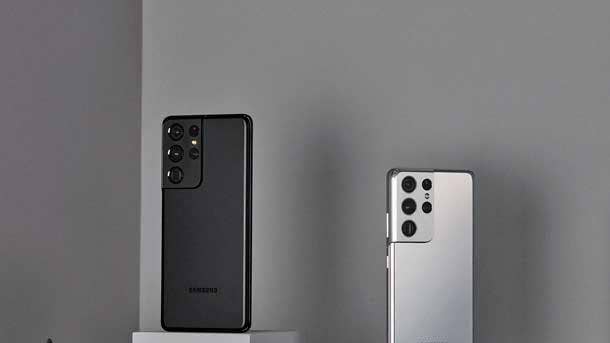
Smartphones / Mobile Computers
Winner:
Samsung Galaxy S21 Ultra
The flagship model in Samsung’s Galaxy S21 series, the Galaxy S21 Ultra offers a number of improvements including expansion to a quad-camera system (from three cameras on the predecessor model from last year) and support for Samsung’s S Pen stylus—the first time that a Galaxy S series device has featured S Pen support. Other key features include improved resolution (of 515 pixels per inch) on the 6.8-inch AMOLED display with up to 1,500 nits of brightness; automatic adjustment for the display refresh rate (between 10Hz and 120Hz) to optimize both viewing quality and battery life; up to 100X zoom on the camera along with a new zoom lock feature for clearer photos; and support for both types of 5G connectivity—sub-6GHz and higher-speed, mmWave 5G.
Finalist:
Zebra Technologies EC50/EC55
Zebra Technologies has launched a new category of individually assigned mobile computers with the recent debut of its EC50 and EC55, which are the company‘s thinnest and lightest enterprise mobile computers with an integrated scanner to date. For the Zebra EC50, for instance, that equals a starting weight of 0.38 of a pound and a thickness of 0.38 of an inch. The Android device also features robust ruggedness—including protection against water/dust and drops of up to four feet.
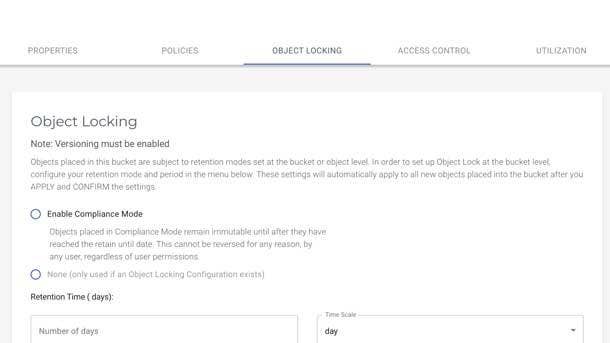
Storage - Cloud
Winner:
Wasabi Object Lock
With Object Lock, cloud storage firm Wasabi Technologies is providing enhanced data protection by enabling the designation of certain data objects as immutable—and thus unalterable and undeletable. This includes accidental actions or intentional actions such as in a cyberattack. Once the data is stored in Wasabi’s system, the data is guaranteed to stay there until the expiration of the lock—with users able to set a timeframe for the immutability of the object. Wasabi Object Lock ultimately prevents both malicious and accidental operations leading to data alteration or loss, with a simplified immutability process for storage administrators.
Finalists:
CTERA 7.0
CTERA offers global file system technology that brings together local file sharing with cloud storage for centralization of data access and a high-quality experience from any location. Updates in CTERA 7.0 include a new method of file synchronization, CTERA Direct, which provides massive throughput of more than 30 TB per day per remote site.
Nasuni UniFS
Nasuni’s UniFS is a global file system cloud-native platform that enables rapid restoration of data to any point in time, and removes the need for additional backup, disaster recovery, remote access, and WAN acceleration. Key recent enhancements have included Global File Acceleration, which speeds up file synchronization across multiple sites by up to 5X.
Panzura CloudFS
With its CloudFS global file system, Panzura offers data management that is high-performance and enriched with intelligence, with the ability to treat cloud storage the same as a globally available data center—instantly making files consistent across locations.
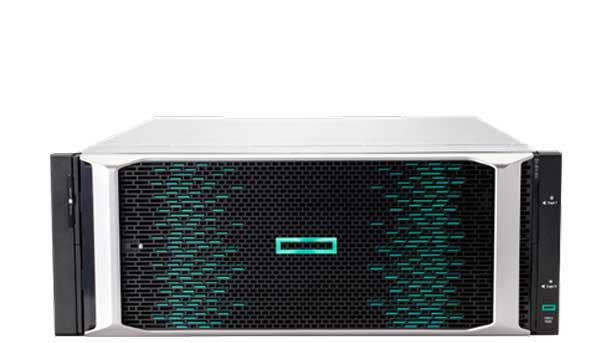
Storage - Enterprise
Winner:
Hewlett Packard Enterprise: HPE Alletra
With its recently launched HPE Alletra storage systems, Hewlett Packard Enterprise offers a cloud-native data infrastructure that brings a cloud-like experience for operations and consumption. The two all-NVMe Alletra systems—the HPE Alletra 9000 and 6000—are managed by the company’s Data Services Cloud Console for unified data management across hybrid cloud deployments along with automated infrastructure management. Alletra offers more than 99.9999 percent guaranteed availability and provides the architectural flexibility needed to run any application—whether modern or traditional—with strong performance, efficiency and resiliency. HPE Alletra can also be managed from any location, and can be delivered as-a-service via HPE’s GreenLake pay-as-you-go consumption offering.
Finalists:
Dell EMC PowerMax
With its flagship Dell EMC PowerMax enterprise storage array, Dell Technologies offers an end-to-end NVMe scale-out architecture combined with built-in machine learning for massive performance (up to 15 million IOPS) and bandwidth (350 GB) as well as ultra-low latency. Key updates have included support for more than 16 million immutable snapshots, improved data availability efficiency and granular data efficiency reporting.
IBM Elastic Storage System 3200
IBM’s Elastic Storage System 3200 is a 2U storage system with performance of up to 80 GB per second per node. Performance scales linearly so that a 10-node system offers up to 800 GB per second. It also comes with IBM Spectrum Scale software, which allows customers to mix-and-match the ESS 3200 with older ESS systems.
Infinidat InfiniBox SSA
The InfiniBox SSA is Infinidat‘s first 100-percent solid-state technology, and is targeted at storage tasks that require consistent low latency. The all-flash array offers boosted performance through the extensive use of DRAM cache, enabled by Infinidat’s patented Neural Cache software.
Pure Storage: Pure as-a-Service
Recent enhancements to Pure-as-a-Service--Pure Storage‘s flexible storage consumption model--include the introduction of its first service catalog, which gives users granular service selections and breaks down the costs of the services to provide clear pricing per GB. Other updates have included the ability to easily tier between on-premises and the cloud.
SoftIron HyperDrive Performance+
With its HyperDrive Performance+ storage appliances, SoftIron enables high performance and low latency for edge computing environments. The appliances are powered by the AMD EPYC 3000 processor, consume less than 250W of power and offer 25GbE network connectivity.
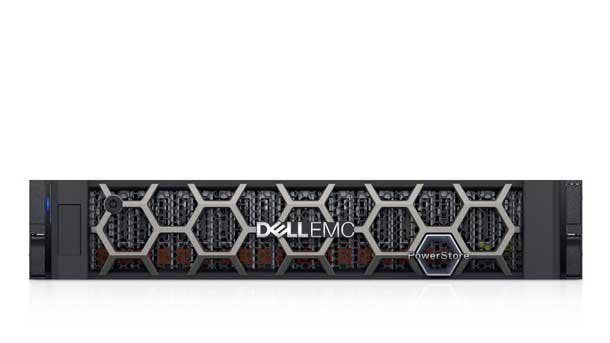
Storage - Midrange
Winner:
Dell EMC PowerStore
Dell Technologies recently expanded its Dell EMC PowerStore portfolio with the launch of a new entry model, the PowerStore 500. Targeted as a lower-priced all-flash storage array, the PowerStore 500 nonetheless brings enterprise-level performance and storage services for businesses of any size—including for use in remote or branch locations, edge environments, or larger IT deployments. The array, which is also available through Dell’s Flex On Demand service, comes in a 2U form-factor chassis with capacity of up to 1.2 petabytes. It supports up to 2.4 million SQL transactions per minute and 1,500 virtual desktops per appliance. In addition, Dell recently unveiled its PowerStoreOS 2.0 software that provides enhanced performance and the ability to run applications directly on the system via the AppsON capability—providing benefits around performance, workload consolidation and mobility.
Finalists:
Quantum H4000
Powered by Quantum’s StorNext 7 file system, the Quantum H4000 is a converged storage appliance that offers strong performance and rapid deployment of a shared storage environment at sites outside of large data centers. The H4000 ultimately offers a complete shared storage file system environment in a single 2U appliance.
Tintri IntelliFlash H-Series
Tintri’s IntelliFlash H-Series of hybrid NVMe systems offer unified storage services that bring together NVMe performance with HDD economics for SAN and NAS workloads at multi-petabyte scale. The systems provide autonomous optimization of SSD-to-HDD ratios for all workloads, and provide both simplified management and massive performance.
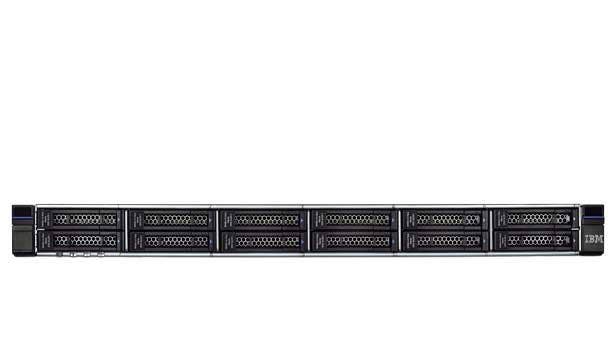
Storage - SMB
Winner:
IBM FlashSystem 5200
A part of the second generation of IBM‘s entry-level, all-flash storage series, the IBM FlashSystem 5200 provides up to 1.7 petabytes of capacity in a 1U chassis and supports 21 GBs per second throughput, or 40 percent greater than its predecessor. The IBM FlashSystem 5200 also offers six nines (99.9999 percent) uptime; IBM’s HyperSwap capability, providing 100-percent availability with as few as three flash modules; and support for migration of data from multiple older IBM and non-IBM arrays, via the the included IBM Spectrum Virtualize software. Additionally, the FlashSystem 5200 supports Red Hat OpenShift, Container Storage Interface for Kubernetes, Ansible automation, Kubernetes and VMware and bare metal environments. The system also includes IBM Storage Insights to provide visibility across complex storage environments, as well as IBM Spectrum Virtualize, for virtualization and consolidation of multi-vendor storage technologies.
Finalist:
DataCore SANsymphony BZ
With SANsymphony BZ, DataCore offers a simplified approach to aggregating isolated storage resources into a single storage services pool, while still providing strong performance and flexibility. The solution enables smaller installations to do capacity provisioning and data placement—across a variety of different storage environments—using a centrally automated and managed approach.
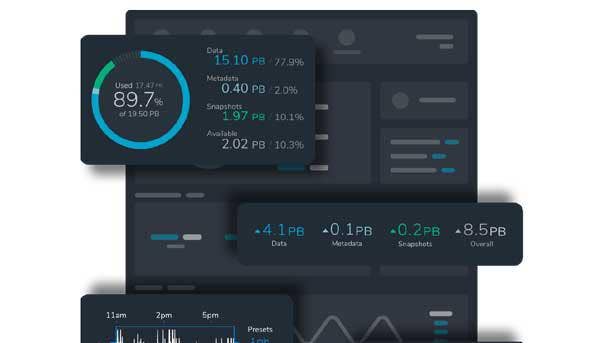
Storage - Software-Defined
Winner:
Qumulo NvME-hybrid Architecture
With an aim toward solving the biggest data challenges currently facing organizations, Qumulo has rewritten the file system to offer a 100-percent software-defined approach bringing flexibility, simplified management and dynamic scalability. The company’s first-in-the-industry NvME-hybrid open architecture enables strong performance at a low cost. Capabilities include machine learning-driven intelligent caching that keeps the hottest data on the fastest media, while data that is not in use can be stored on lower-cost HDDs—providing both robust performance when needed as well as cost effectiveness. And all of this functionality is available without the need for human intervention.
Finalists:
DataCore Swarm
DataCore Swarm offers on-premises object storage providing simplification around management and protection of data—while enabling S3/HTTP access for all applications, devices and users. The solution ultimately turns data archives into easily accessible content libraries supporting remote workflows and scalability.
Fungible Storage Cluster
Leveraging the high-performance Fungible DPU microprocessor, the Fungible Storage Cluster is a disaggregated, scale-out storage platform providing up to 15 million IOPS. The platform’s strong performance allows for consolidation of workloads—enabling improved storage media utilization and a smaller footprint—while the platform also scales linearly to up to 300 million IOPS in a 40U rack.
Lightbits Labs: LightOS
With LightOS, Lightbits Labs offers software-defined storage that is disaggregated, NVMe-based and composable. The NVMe/TCP storage offering enables a more cost-effective version of the type of high-performance storage architectures used by hyperscale firms—with key capabilities including simplified scaling for capacity, enhanced efficiency and the ability to independently scale storage and compute resources.
VAST Data Gemini
VAST Data’s Gemini offering represents the transition of the company’s Universal Storage Platform to software-only—disaggregating the hardware and software sides and allowing partners to license infrastructure software based on capacity. The offering ultimately provides improved flexibility and a lower cost while maintaining the benefits of VAST Data’s cluster appliance model.
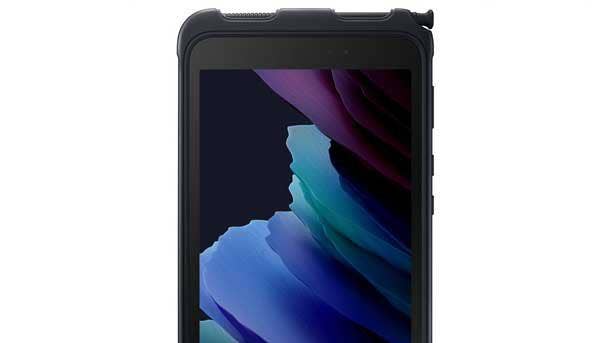
Tablets
Winner:
Samsung Galaxy Tab Active3
Samsung’s Galaxy Tab Active3 is a rugged Android tablet for businesses featuring a number enhancements for both users and IT administrators. The 8-inch tablet gets a boost on display resolution to 1,920 x 1,200 (from 1,280 x 800 previously), a larger battery (enabling up to 11 hours of battery life) and new features such as a programmable key that can be configured to open commonly used apps. Samsung also makes it simpler to manage a fleet of Galaxy Tab Active3 devices. The Tab Active3 is the first U.S. tablet that’s available out of the box with Samsung’s Enterprise Edition–which features a year of access to the Knox Suite, providing tools for mobile enrollment, setup and endpoint management.
Finalist:
Panasonic Toughbook G2
A fully rugged, 2-in-1 tablet running Windows 10 Pro, the Panasonic Toughbook G2 offers a 10.1-inch display, up to 18.5 hours of battery life and three programmable buttons for launching frequently used apps and shortcuts. The tablet also provides three modular expansion areas, allowing users to customize the tablet with functionality such as a barcode reader, thermal camera, serial port or quick-release SSD.
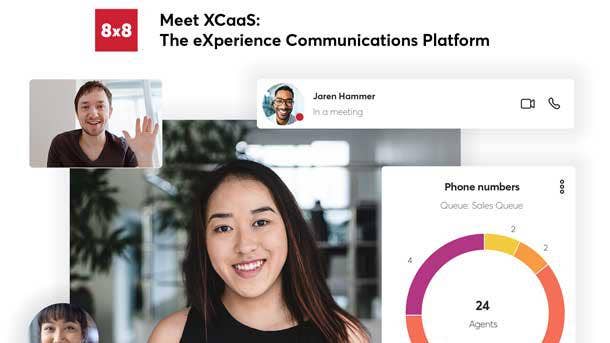
Unified Communications
Winner:
8x8 XCaaS
With its Experience Communications as a Service (XCaaS) solution, 8x8 provides a cloud communications offering that converges Unified Communications as a Service and Contact Center as a Service. The solution integrates capabilities that include cloud-native contact center, voice, meetings, team chat and Communications Platform as a Service. Key benefits for 8x8 XCaaS include high reliability and availability—featuring the only UCaaS and CCaaS platform-wide 99.99 percent uptime service-level agreement in the industry—as well as a unified provisioning and configuration console, integrations with Microsoft Teams and more than 50 other third-party apps, and cross-platform analytics providing insights from interactions in real-time.
Finalists:
Avaya Cloud Office Rooms
The Avaya Cloud Office Rooms solution with the CU360 collaboration unit offers an easy way to provide video meeting capabilities for meeting areas such as conference and huddle rooms. Key features include single-touch starting and joining for meetings; dual-screen capabilities for sharing content; the ability to share a screen to the monitor wirelessly; and integrations with Microsoft and Google calendars.
Dialpad
Dialpad offers calling, video conferencing and messaging in a single app, enhanced by capabilities that are driven by artificial intelligence and natural language processing. Dialpad Meetings offers AI-powered capabilities such as live note-taking and automated, real-time transcription.
Fuze
Fuze offers a unified communications and contact center platform, with capabilities across calling, meeting, chatting and sharing. Recently added solutions include tailored vertical-focused offerings that support industries such as manufacturing and recruiting.
Ribbon Connect
Ribbon Connect is a cloud-based service for enabling organizations to migrate to cloud collaboration at whatever pace is right for them. The service, which runs on the Microsoft Azure cloud platform, provides a secure connection for phone numbers, lines and calling plans to the Microsoft Teams collaboration platform.
Zoom Phone
The Zoom Phone solution brings Zoom video, audio and content-sharing capabilities to appliances from vendors including Poly and Yealink. The Zoom Phone Appliance interface allows for starting and joining Zoom Meetings; searching contacts; calling and transferring calls; accessing multiple lines; and moving to a Zoom meeting from a Zoom Phone call.
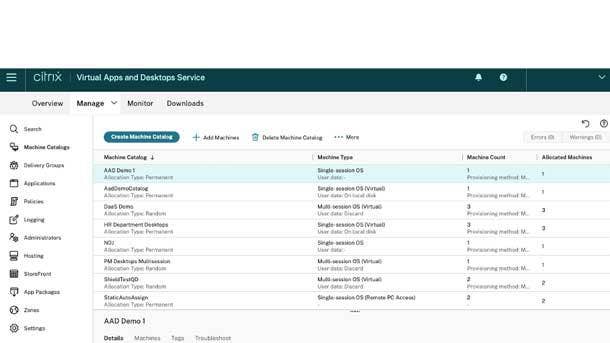
Virtualization - Apps/Desktops
Winner:
Citrix Virtual Apps and Desktops Service
Citrix’s Virtual Apps and Desktops Service is a virtual desktop infrastructure (VDI)/Desktop as a Service solution that enables delivery of cloud apps and desktops to users wherever they’re located. Recent enhancements to the solution have included the debut of Service Continuity, which offers significantly improved reliability for users—ultimately providing a level of fault tolerance that is unique in the industry. Service Continuity enables continued access for users to active virtual apps and desktops in the event of an outage, allowing a connection directly to the resource location or via the Citrix Gateway service—supporting continued productivity no matter what the health status is for their cloud services.
Finalists:
Cameyo Virtual Application Delivery
Cameyo’s Virtual Application Delivery provides secure delivery of virtual applications—including legacy Windows apps, internal web apps and Software-as-a-Service—for any type of digital workspace. The platform delivers the apps using the web browser, and avoids the need for VPNs or a virtual desktop solution.
IGEL UD Pocket2
IGEL’s UD Pocket2 is a USB device the allows users to quickly and securely access their virtual desktop infrastructure (VDI) or managed cloud workspace. The UD Pocket2 works with any x86-64 endpoint—both legacy and modern devices—transforming the device into an endpoint powered by the secure IGEL OS Linux-based operating system.
Parallels Desktop for Chrome OS
With its Parallels Desktop for Chrome OS, Parallels (a business unit of Corel) has launched the first-ever software making it possible to run Windows applications on Chromebooks. Users can run full-featured versions of Windows apps while having the ability to move content and switch between Chrome OS and Windows without the need to reboot.
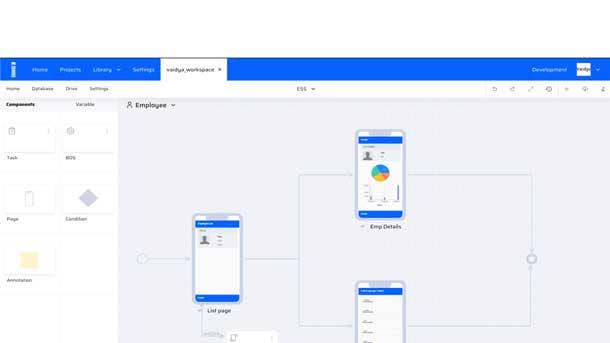
Editor’s Choice
Pillir EdgeReady Cloud
For customers seeking to modernize ERP systems from SAP and other vendors, Pillir’s EdgeReady Cloud is a low-code app platform that accelerates development and dramatically reduces cost. For customers of SAP, for instance, Pillir eliminates the need for high-cost, proprietary SAP Advanced Business Application Programming code—transforming the economics of moving complex SAP ERP systems to the cloud. The Pillir platform also speeds up SAP application development by 20X using a drag-and-drop approach, opening the door for non-developers to add business processes to SAP. Pillir’s EdgeReady Cloud low-code platform is also available for users of Oracle, Salesforce and Microsoft Dynamics systems.
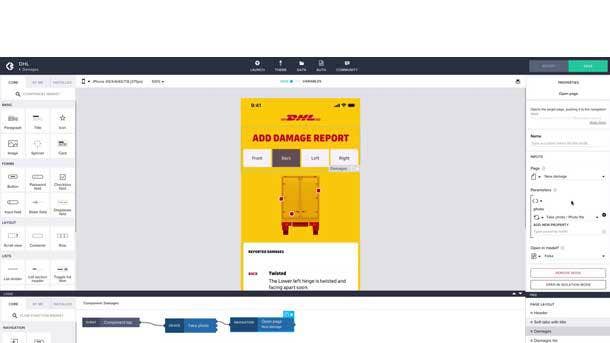
Editor’s Choice
SAP Extension Suite
With an aim toward simplifying application development, SAP’s Extension Suite offerings provide a rapid method for building new applications, processes and experiences. The SAP Extension Suite offerings provide ready-to-use content—such as user interface cards, templates and bots—as well as integrations, connectors and other capabilities to accelerate app development. Recent updates include the introduction of no-code app development capabilities via SAP AppGyver, the composer used by the Extension Suite. Other enhancements for the Extension Suite—which is a layer in SAP’s Business Technology Platform—have included capabilities for helping businesses to better configure and automate enterprise workflows using a low-code approach.